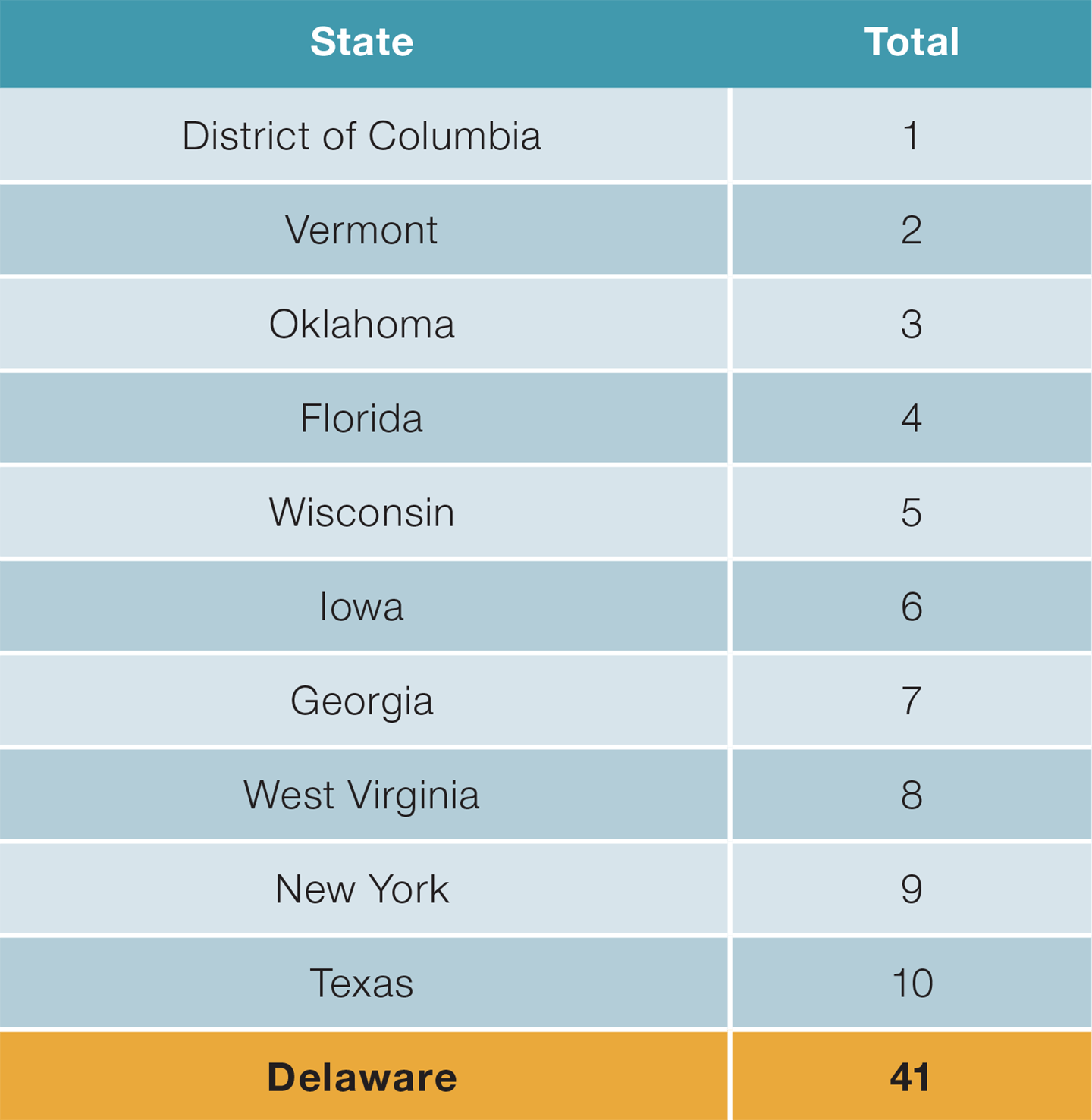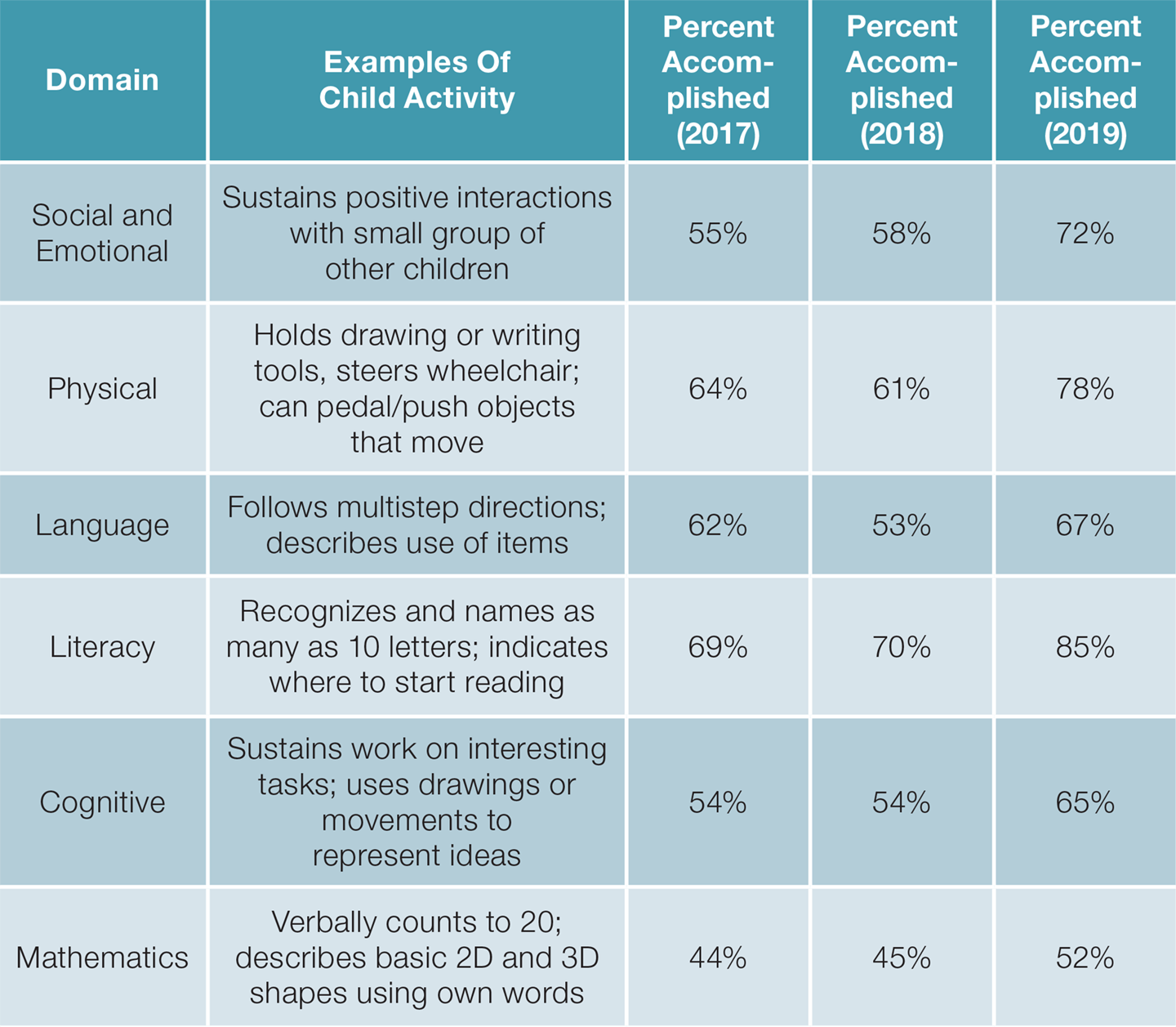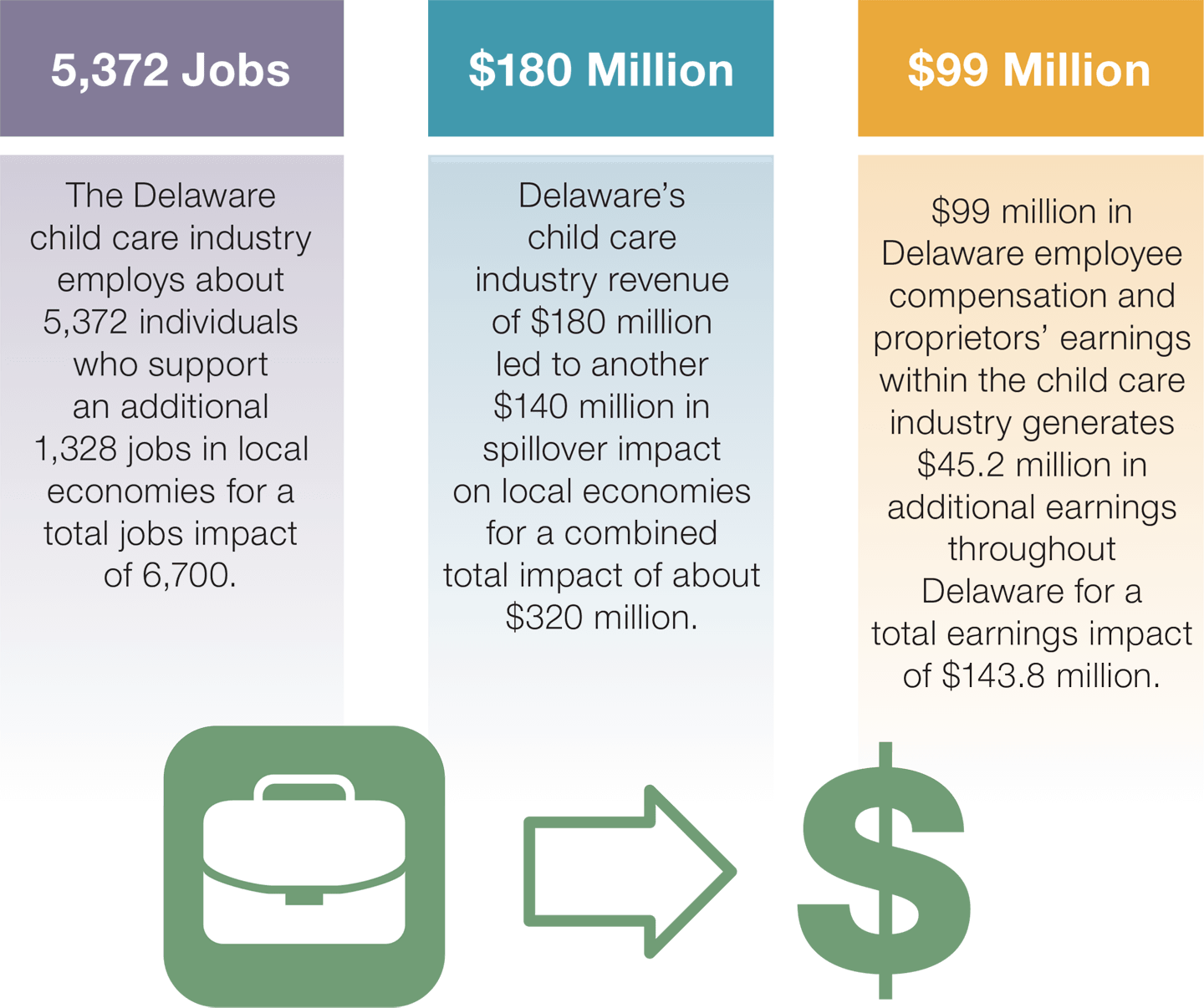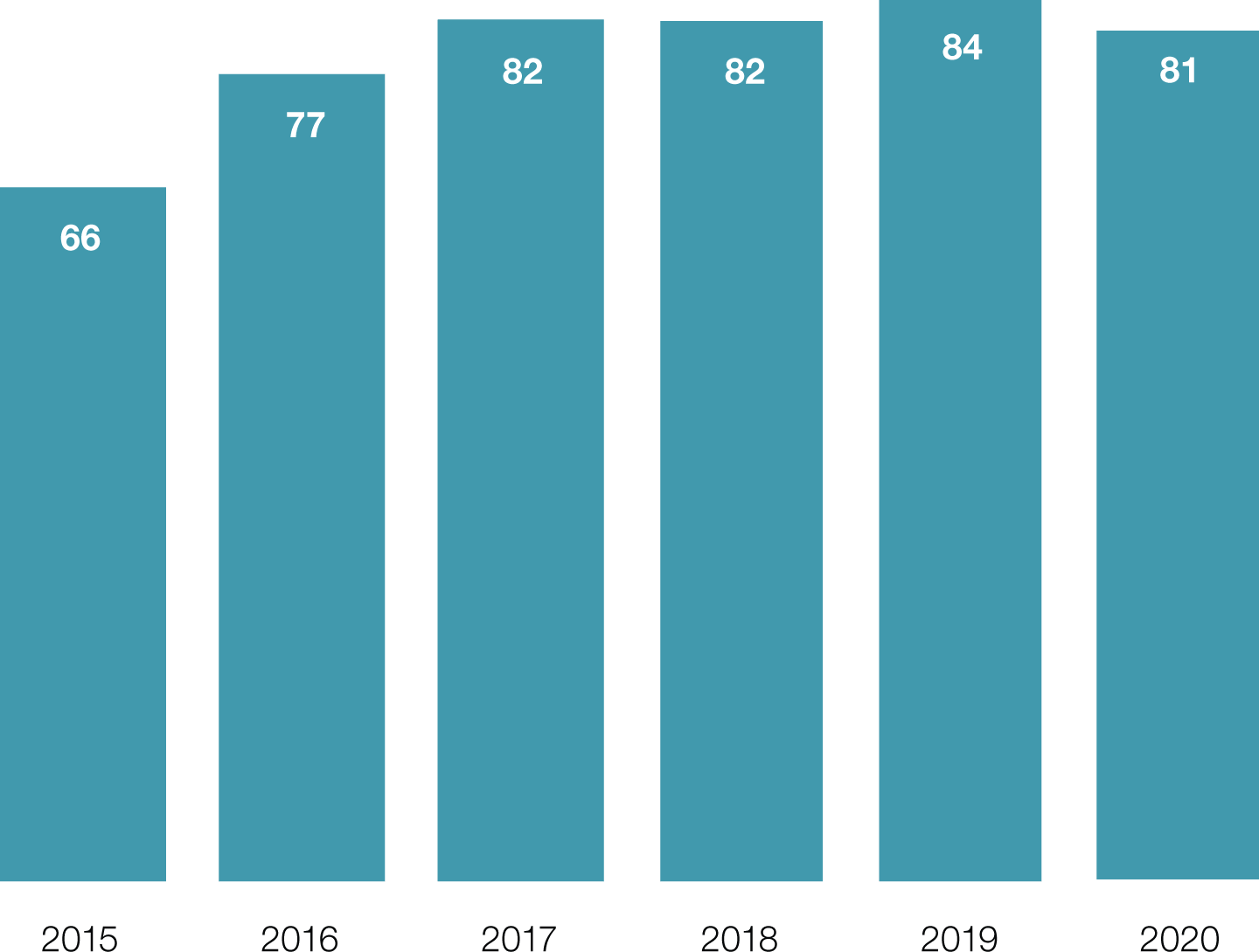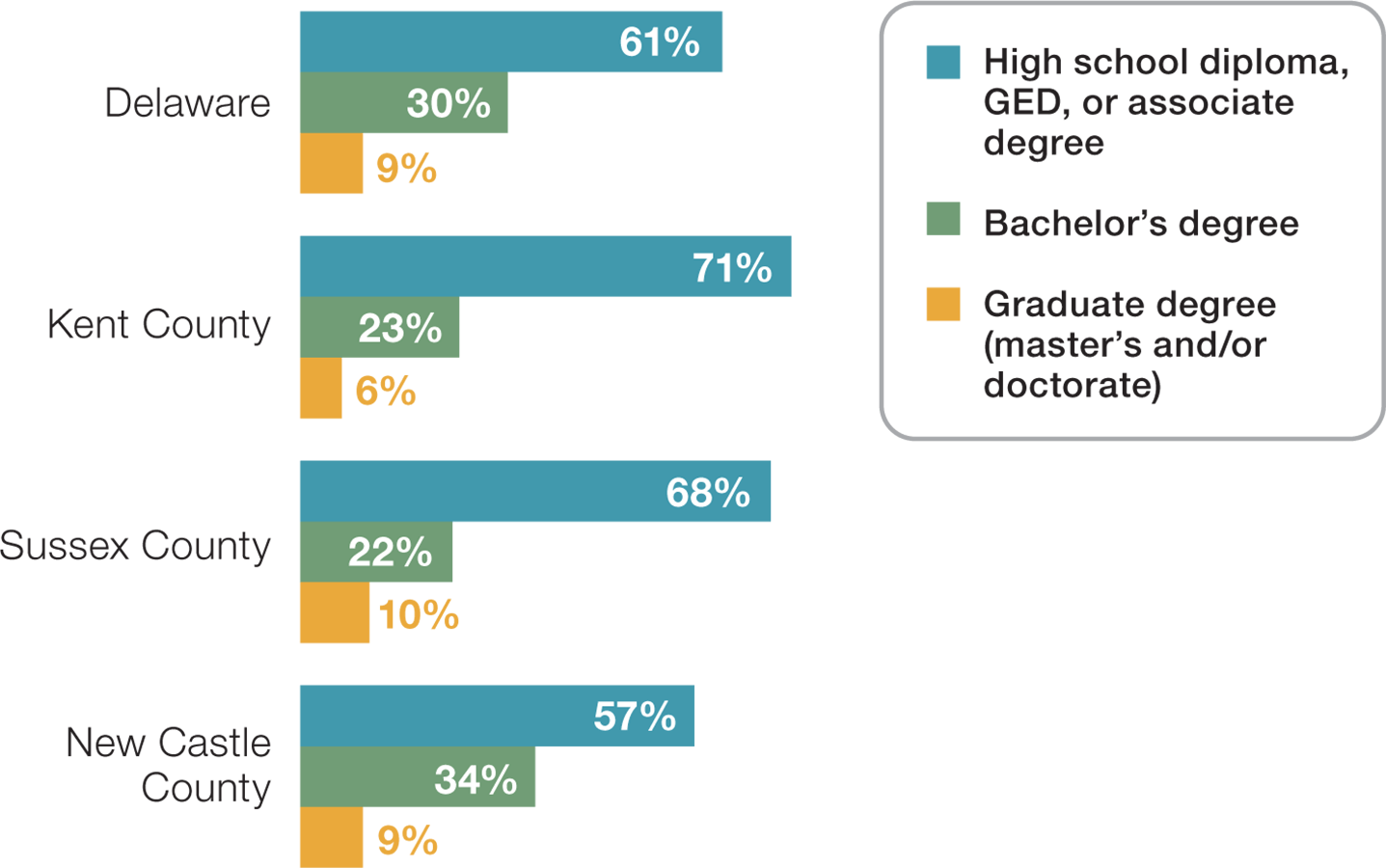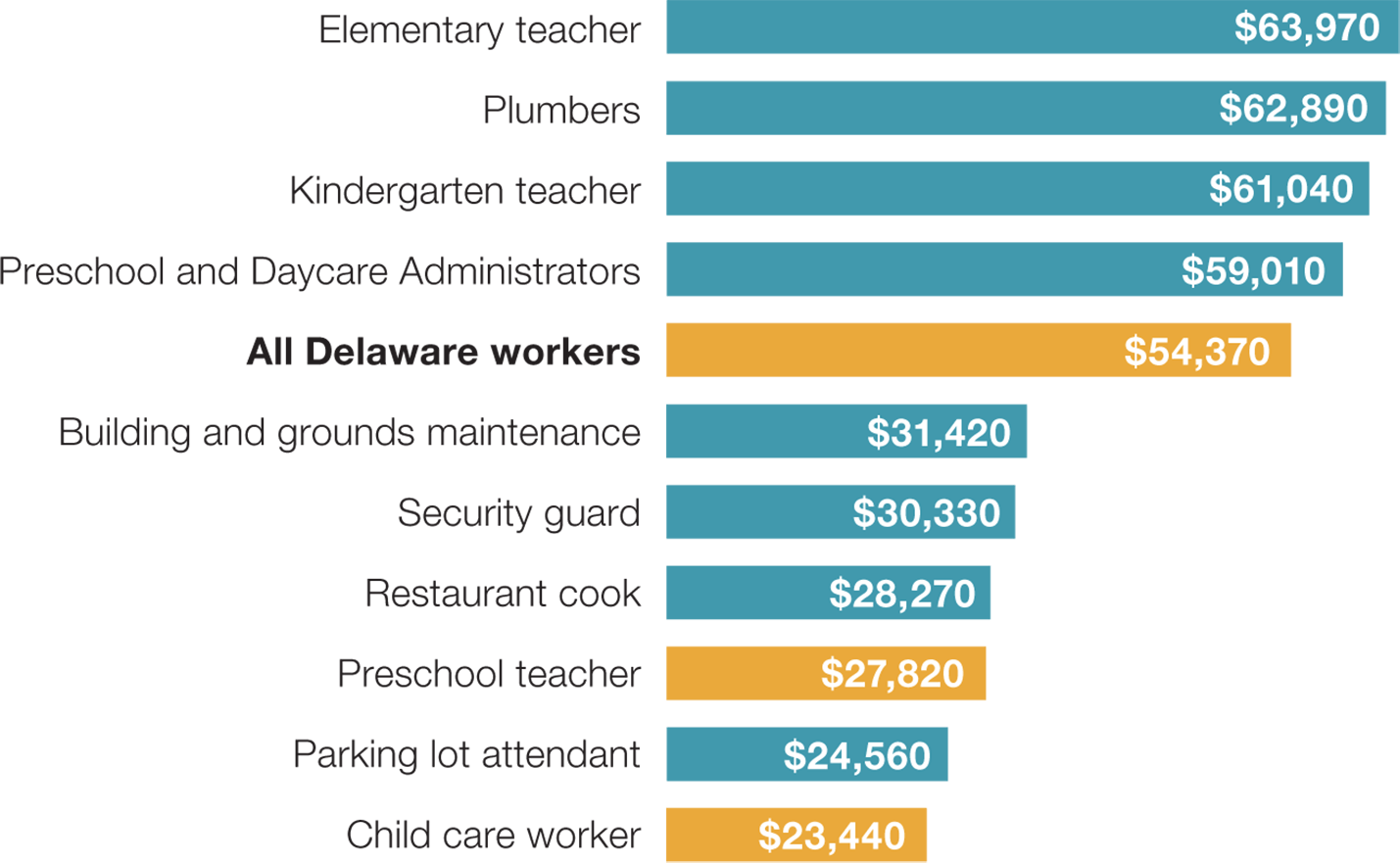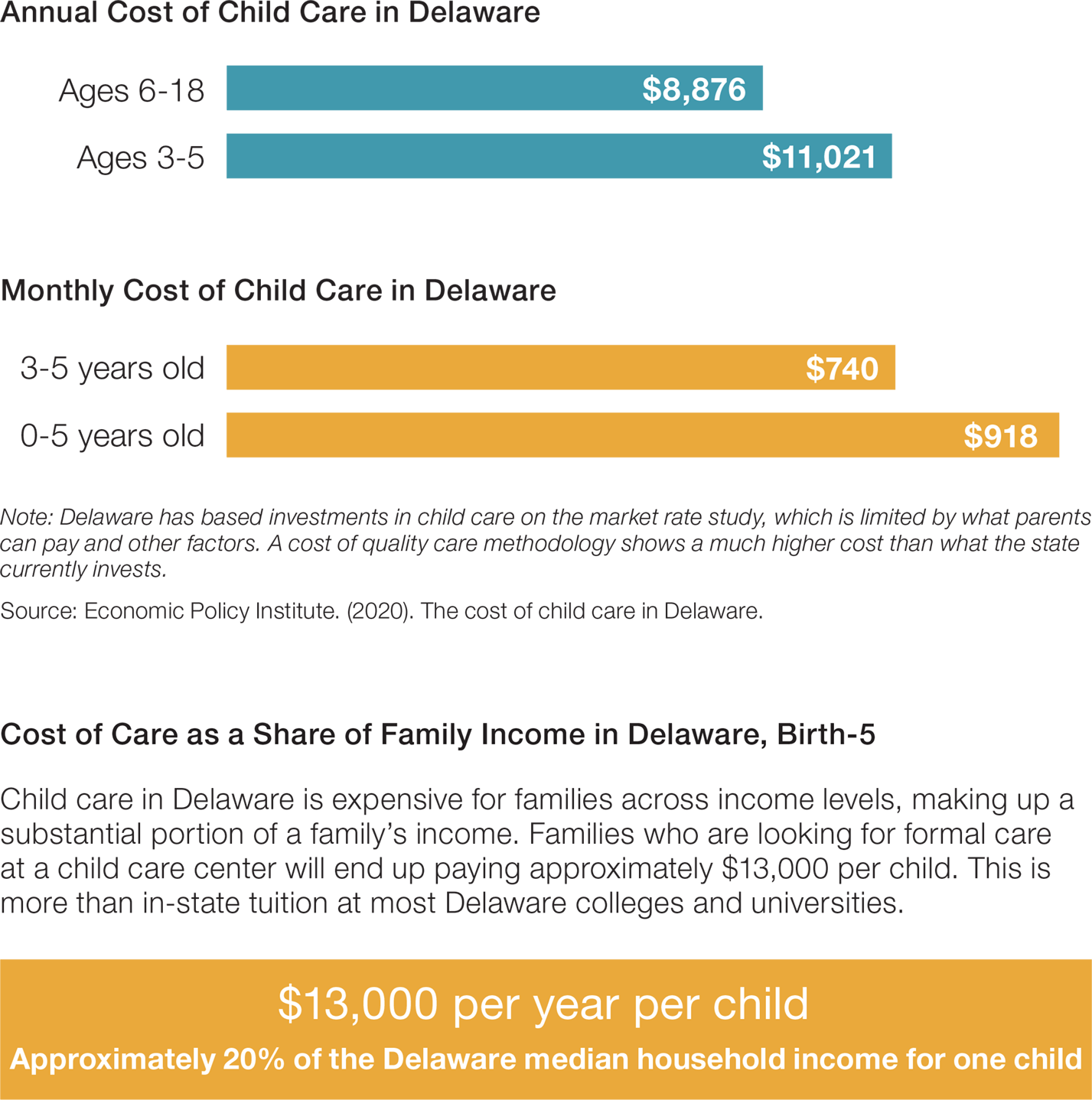The COVID-19 pandemic changed schools forever when it arrived in Delaware in February 2020. It brought about wide-scale virtual learning, vast new volumes of health and safety protocols, and exposed some of the most persistent challenges in our education system. As such, data from the past year are less available than they’ve been in previous years. The U.S. Department of Education granted waivers for standardized testing in all states in spring 2020, leaving student assessment data particularly scant. Rodel will dive deeper into COVID’s impact on school data in the years to come.
People have strong opinions about our public schools, but often times they’re rooted in myths and not statistics. This report offers a snapshot of district- and state-level data on everything from how much we spend to how students perform. View the 2024 edition of At A Glance here, and explore the 2023 version here. The below interactive data is from 2021.
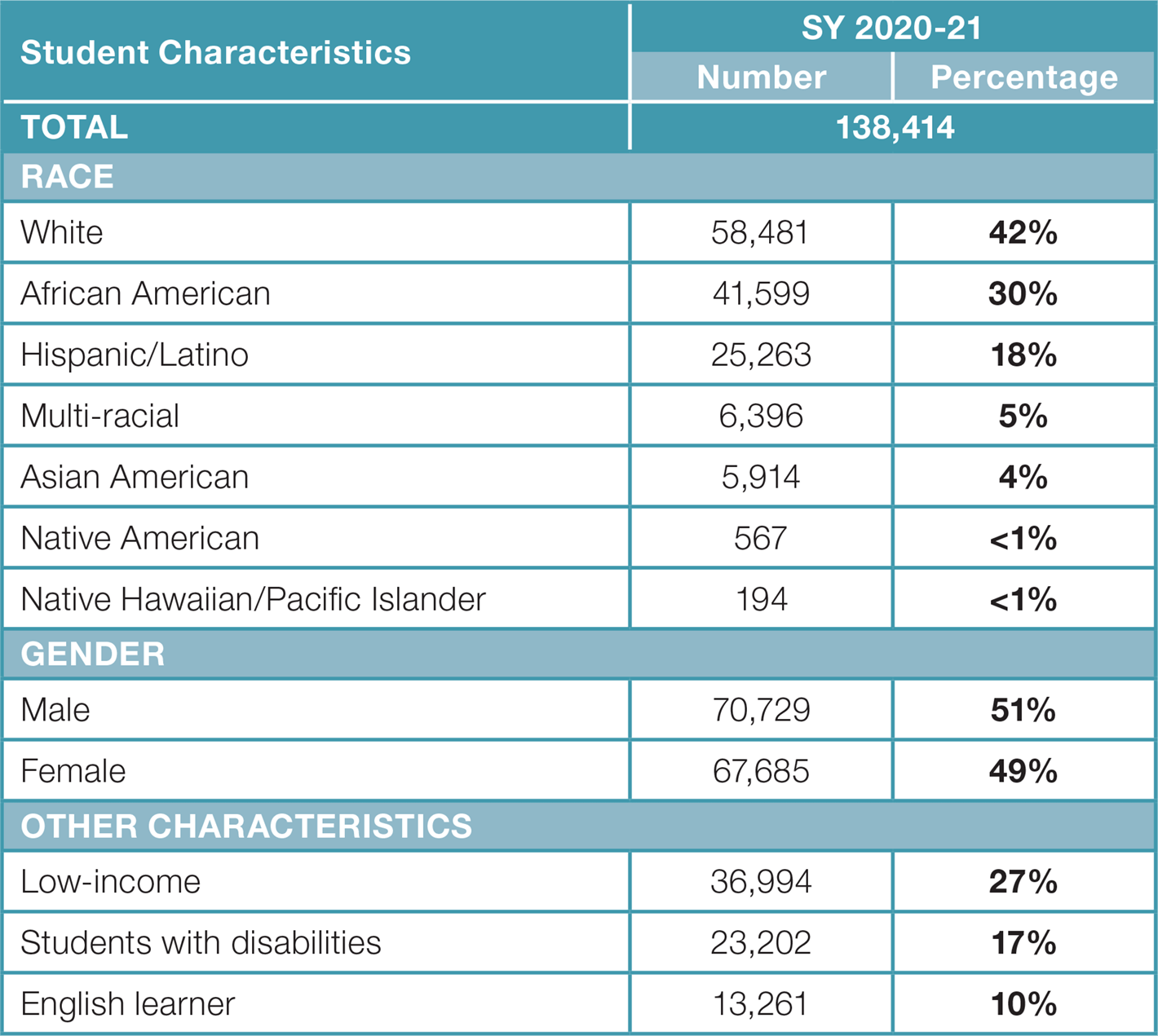
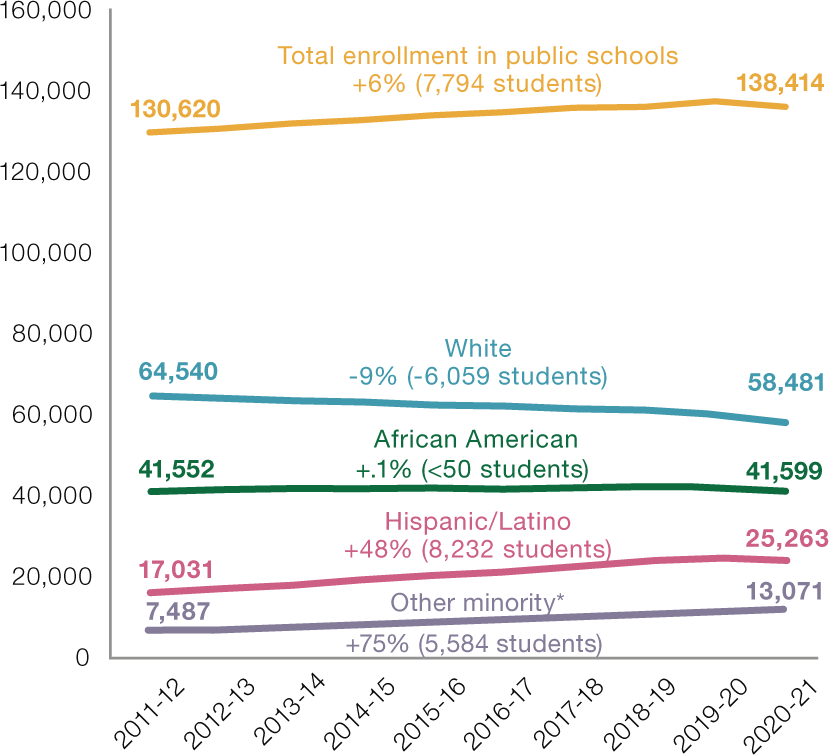
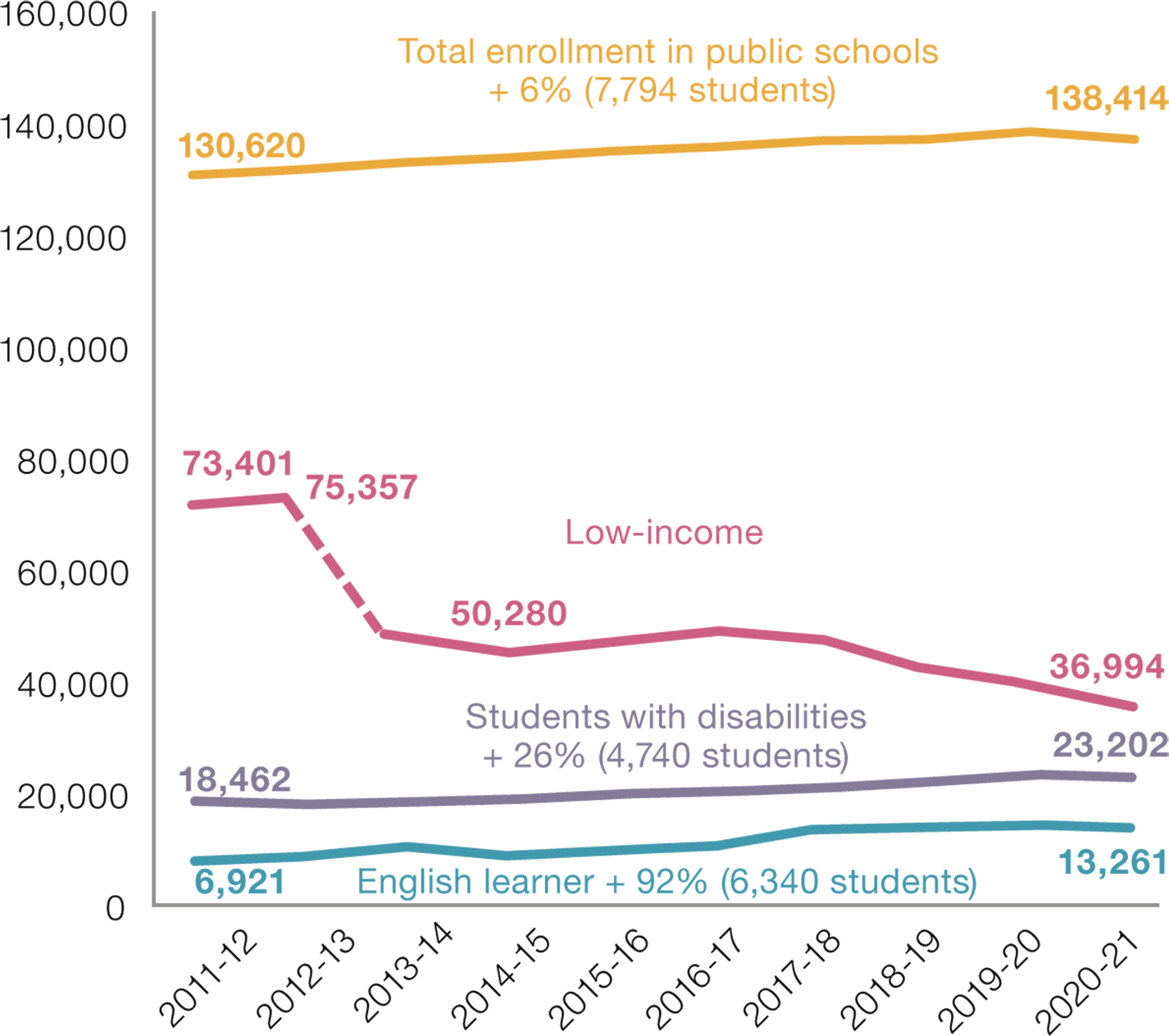
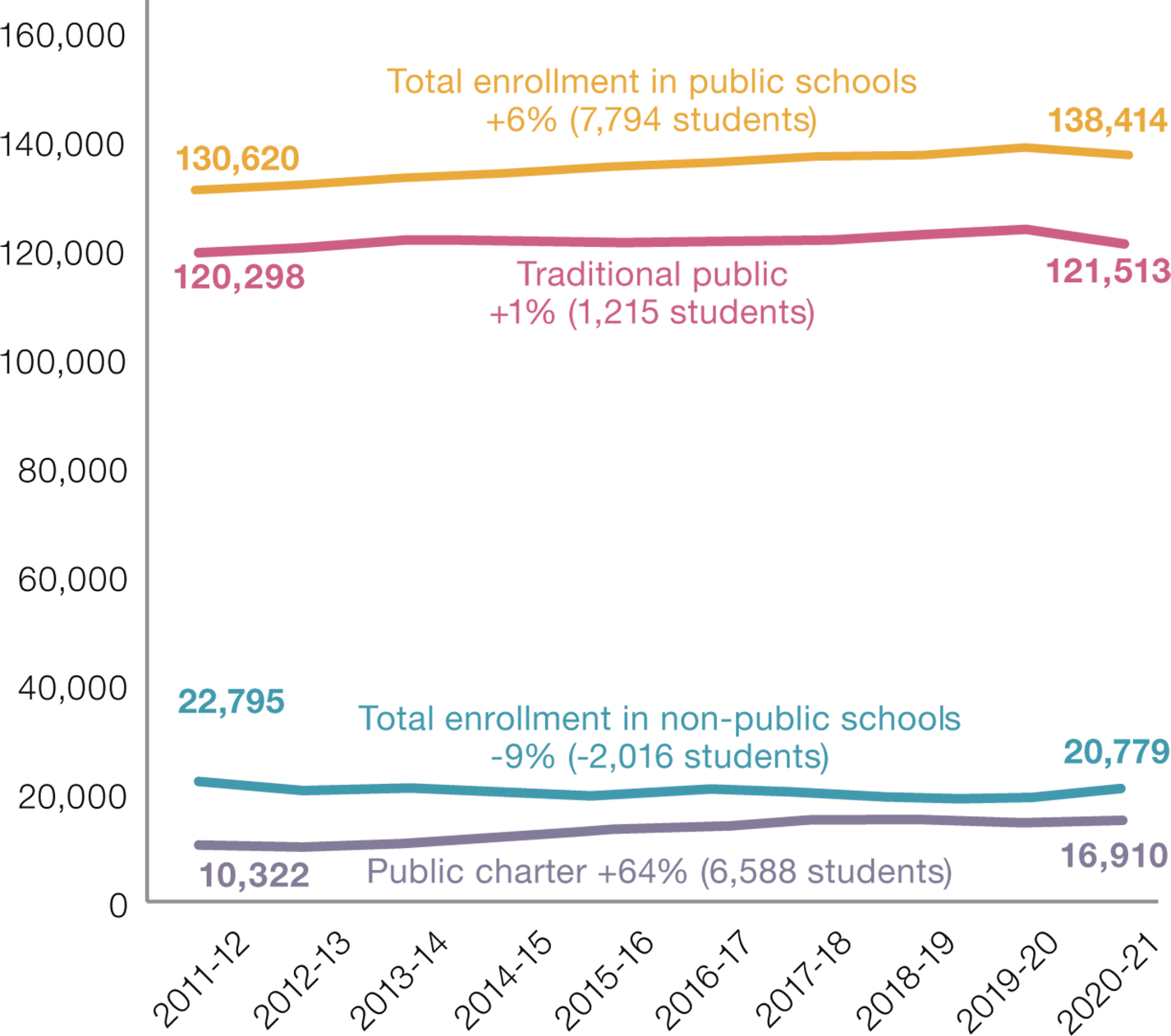
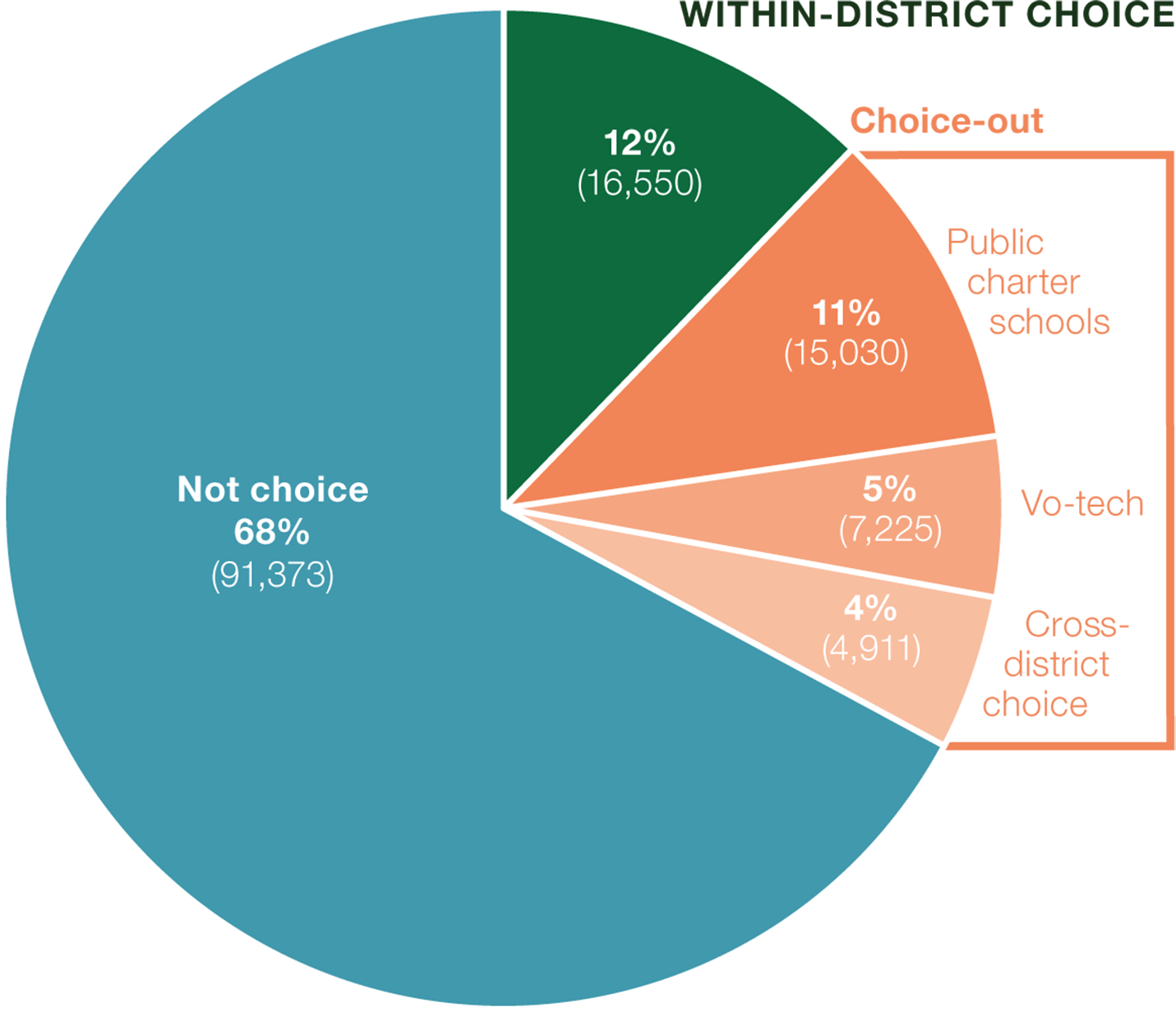

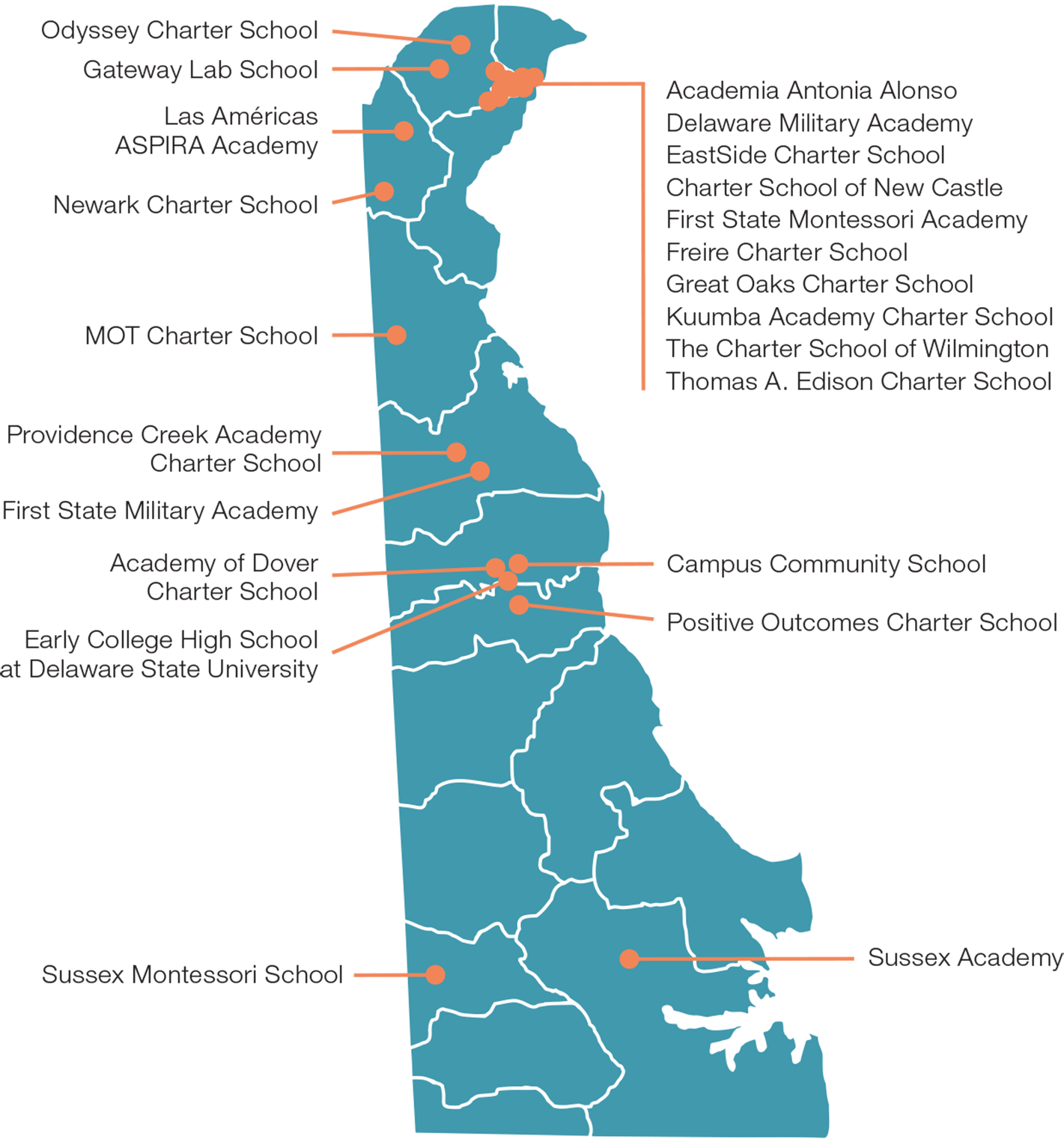
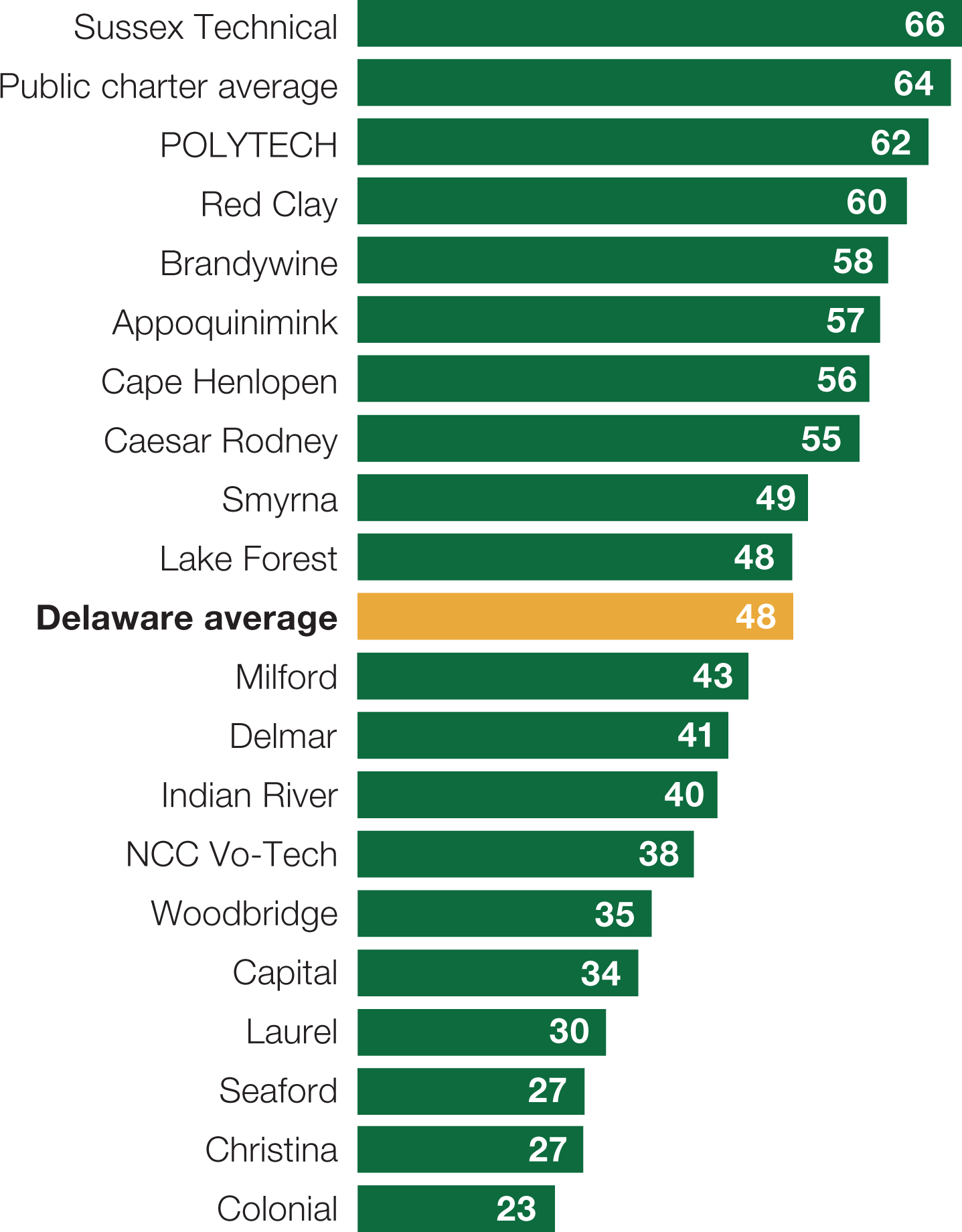
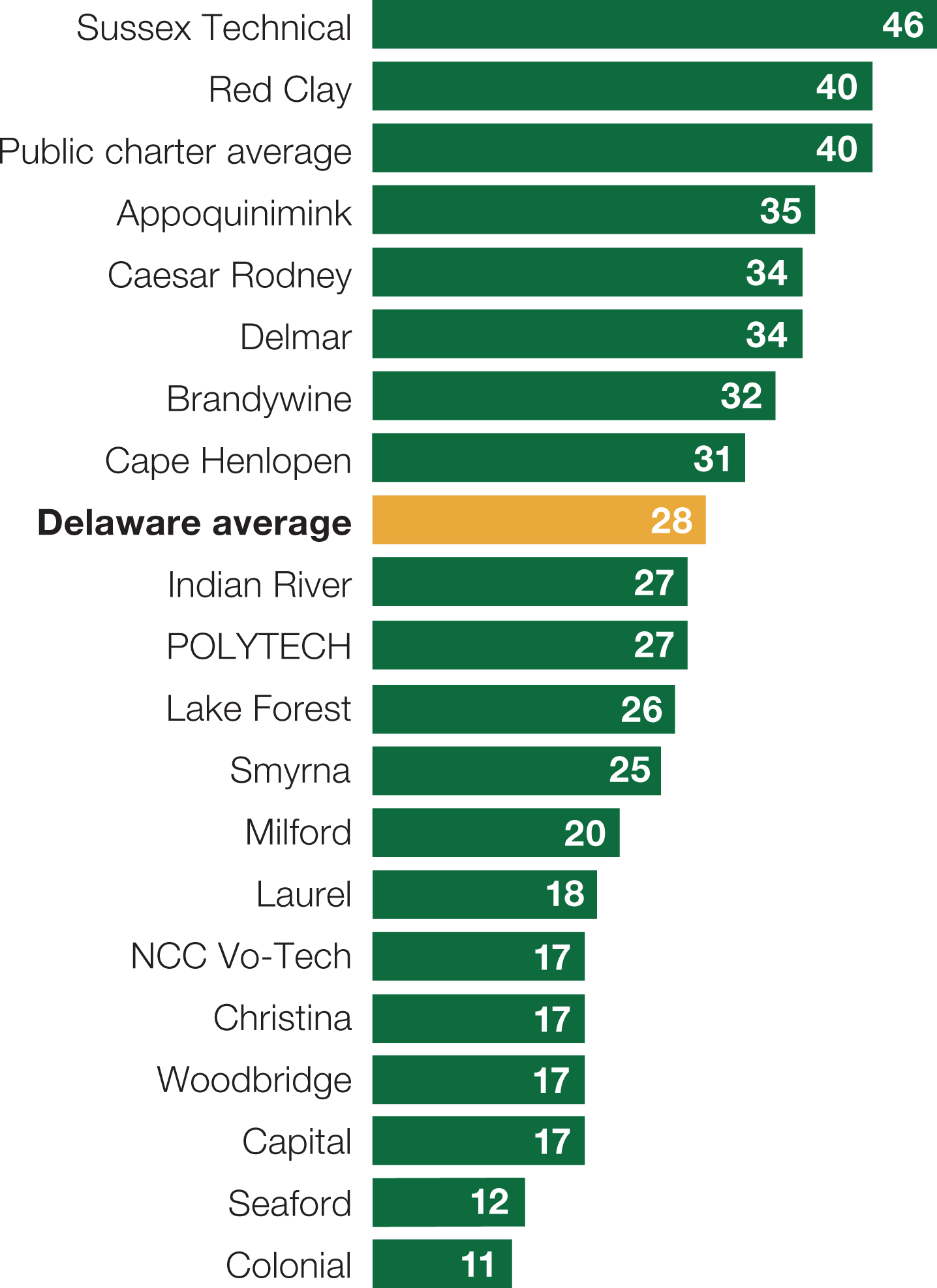
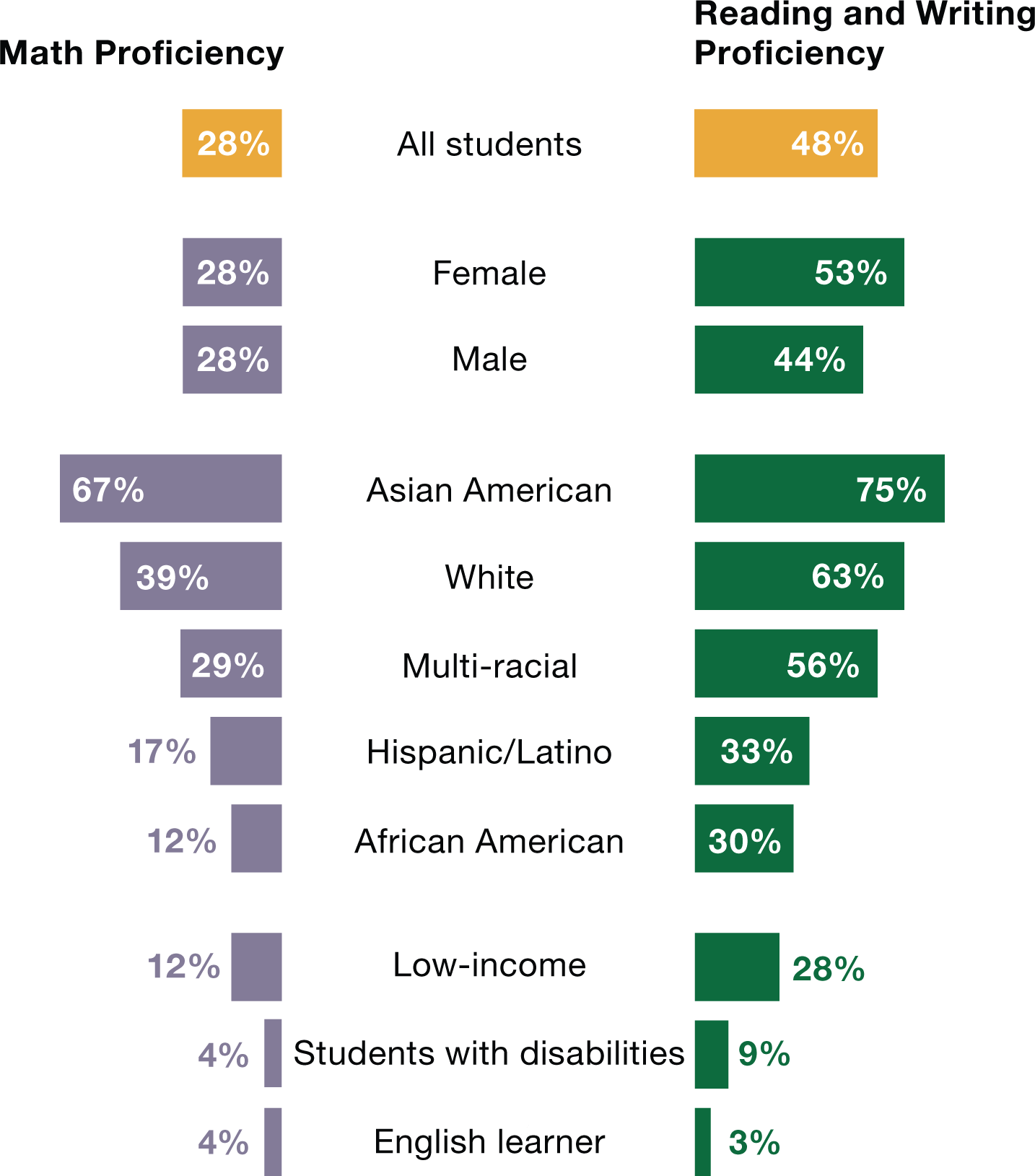
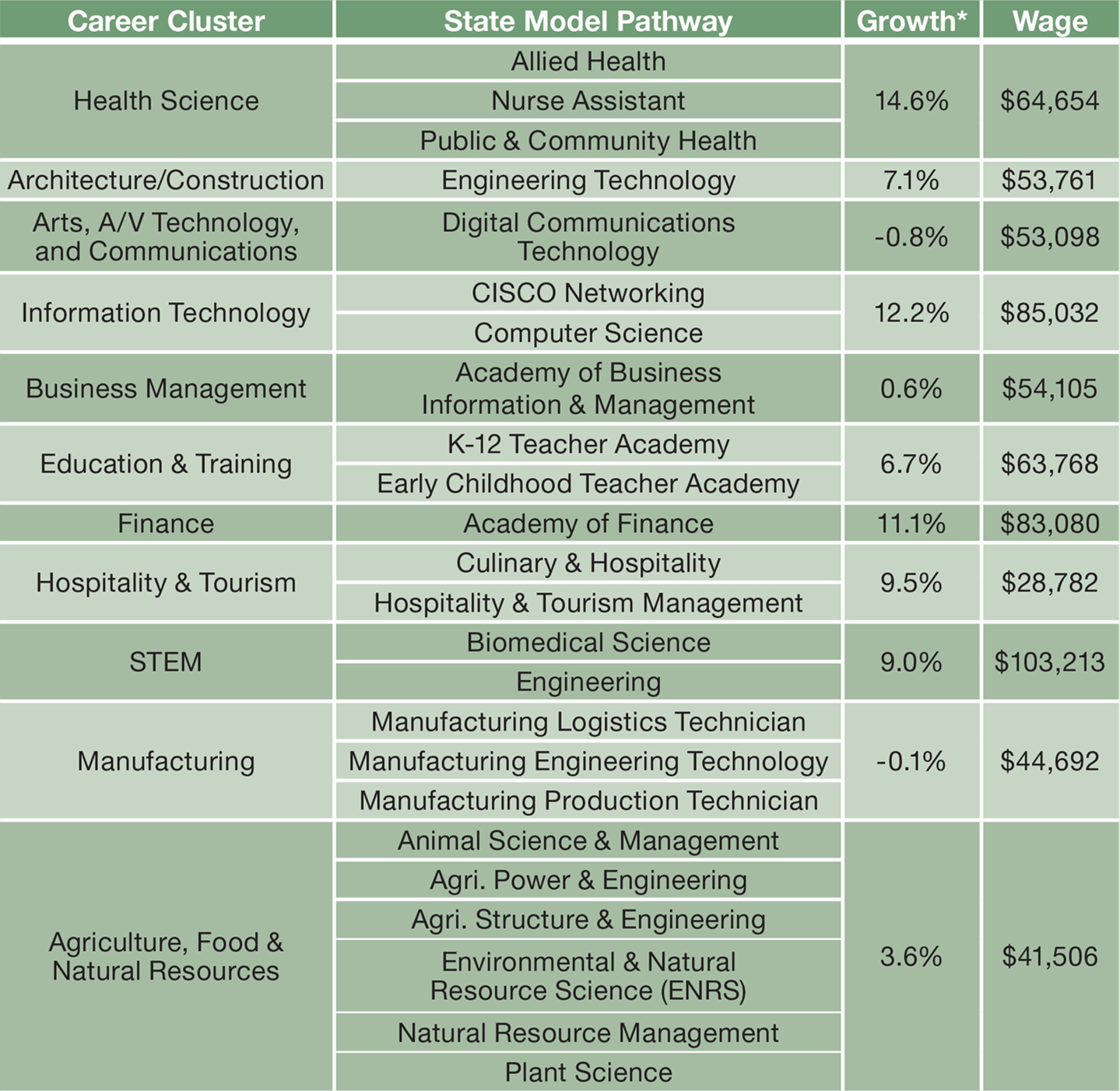
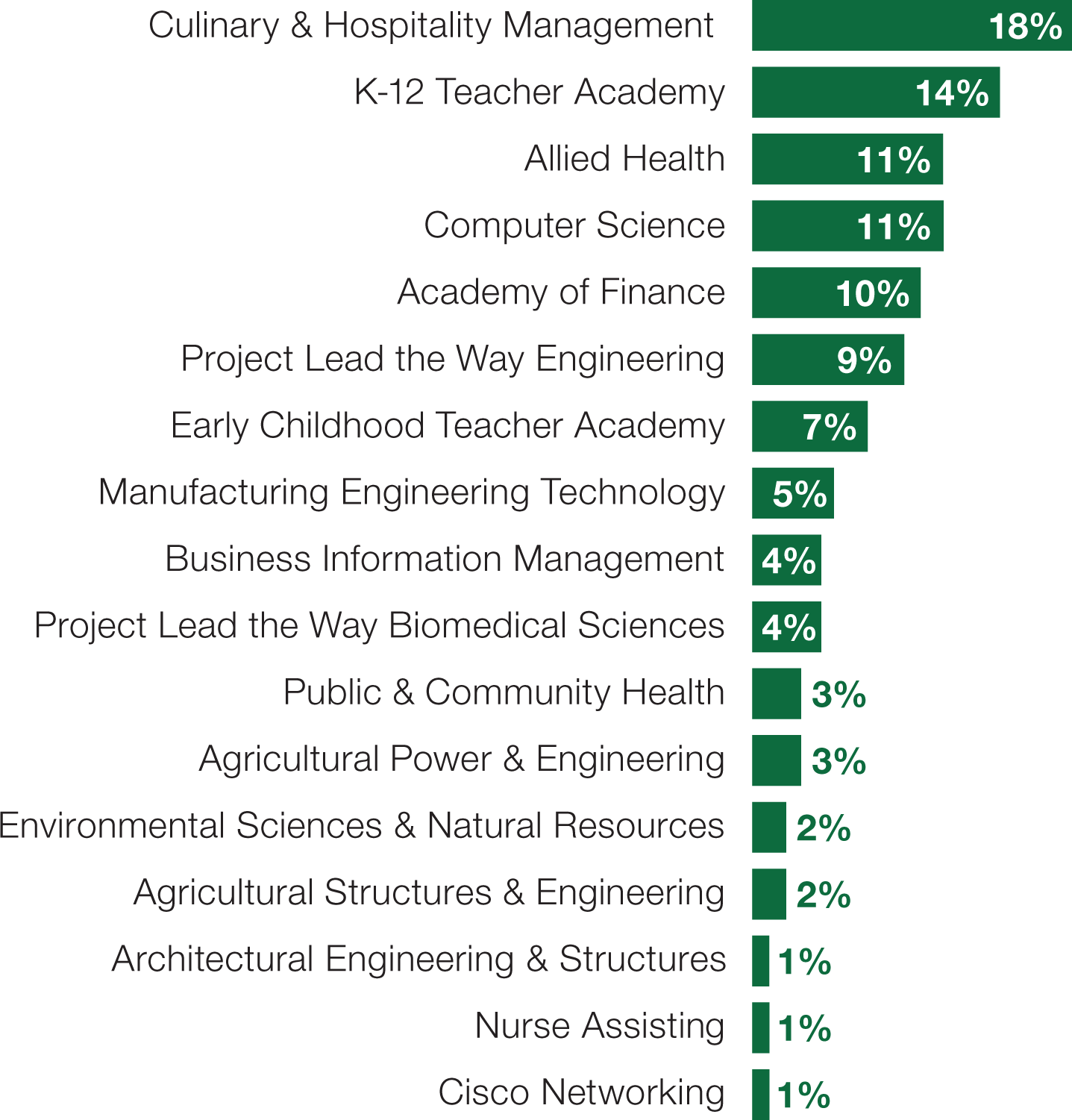
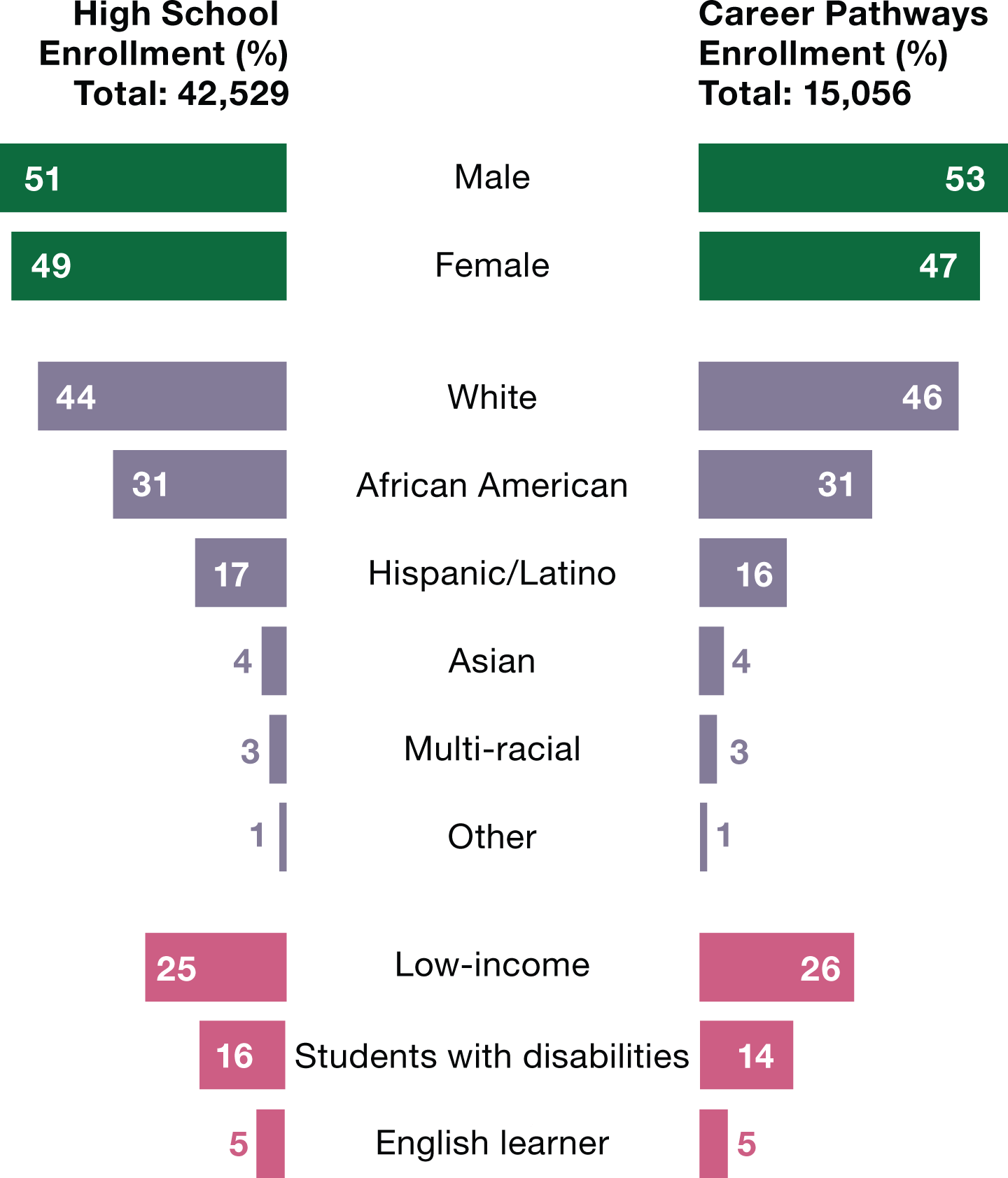
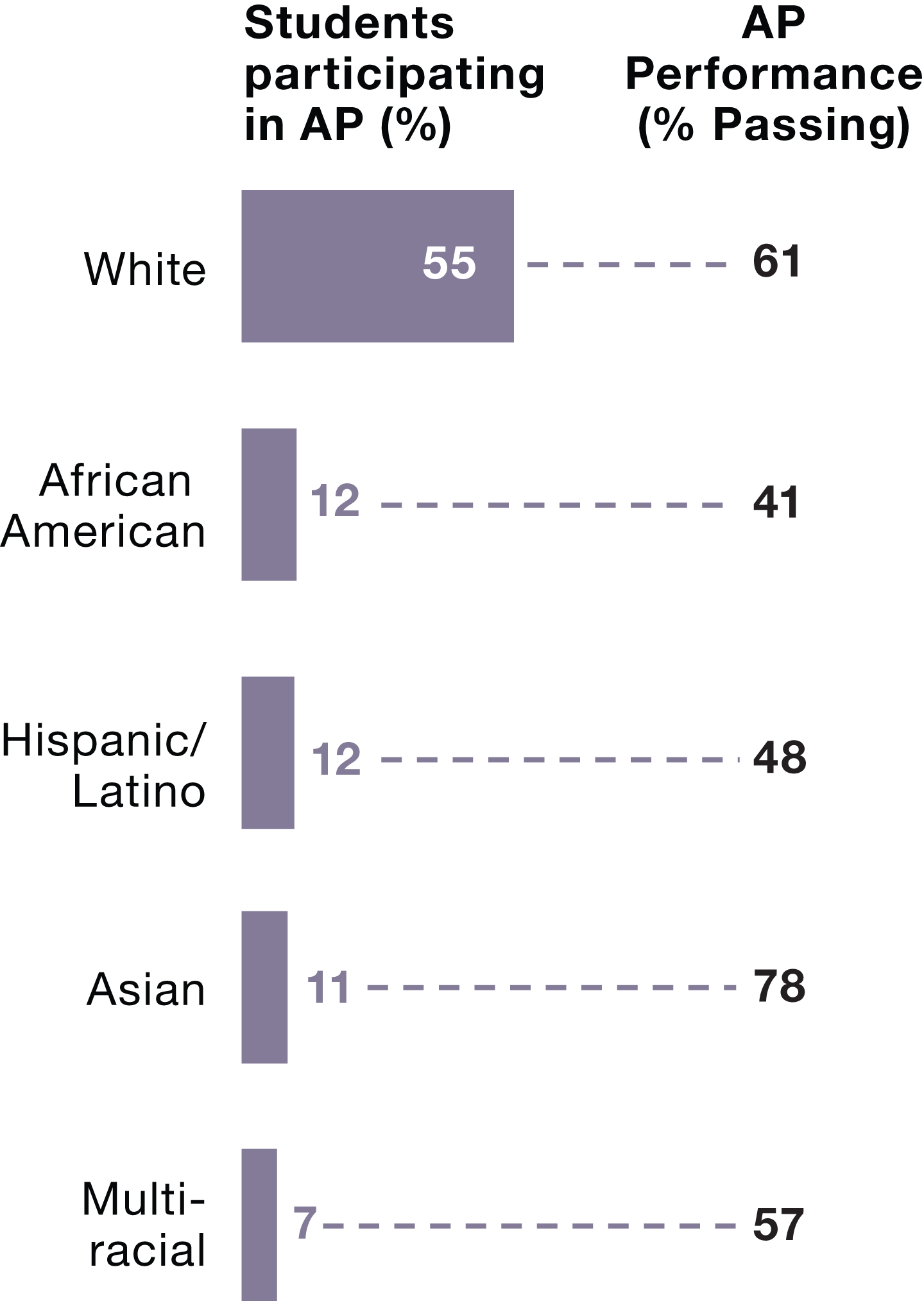
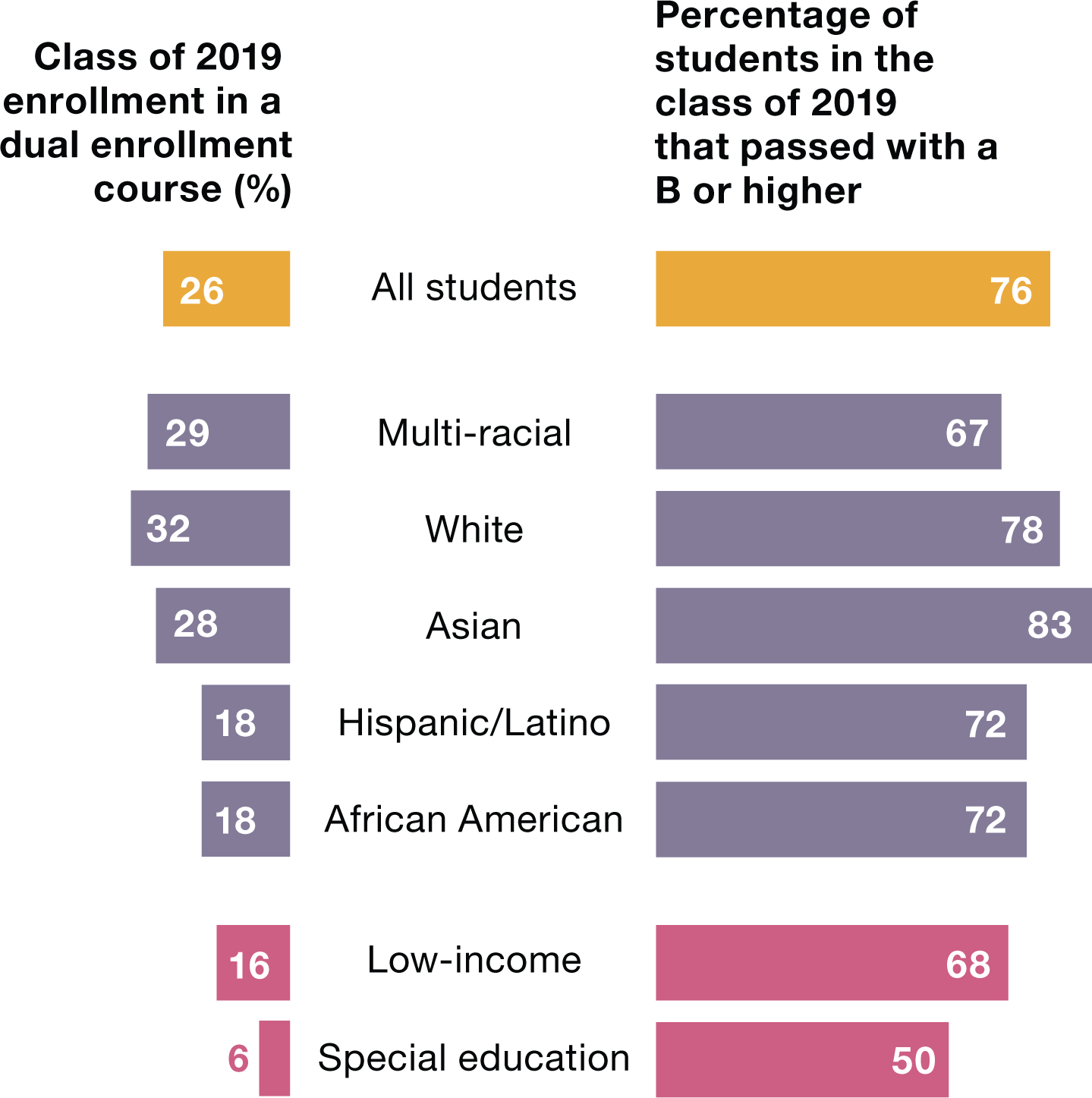
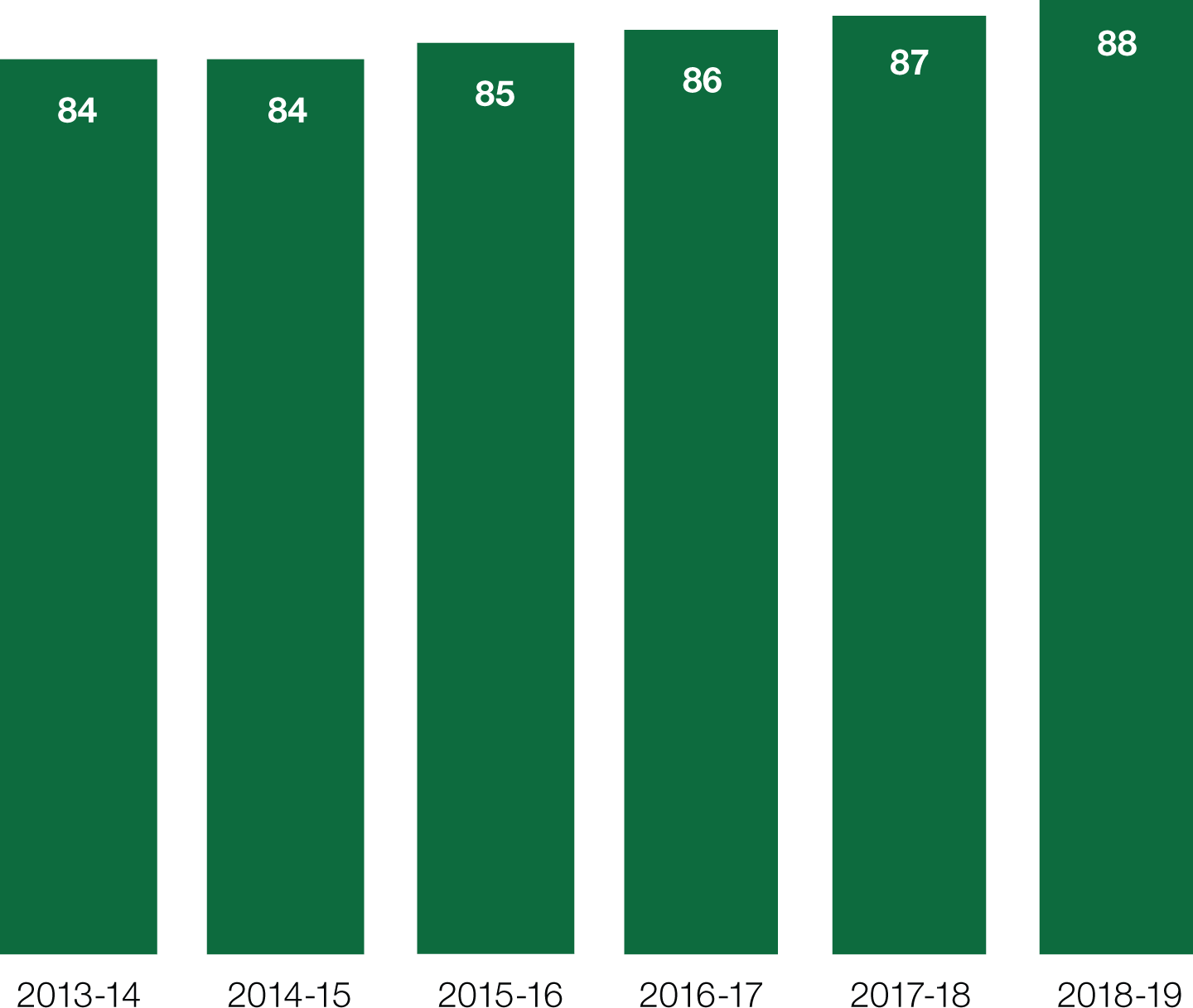
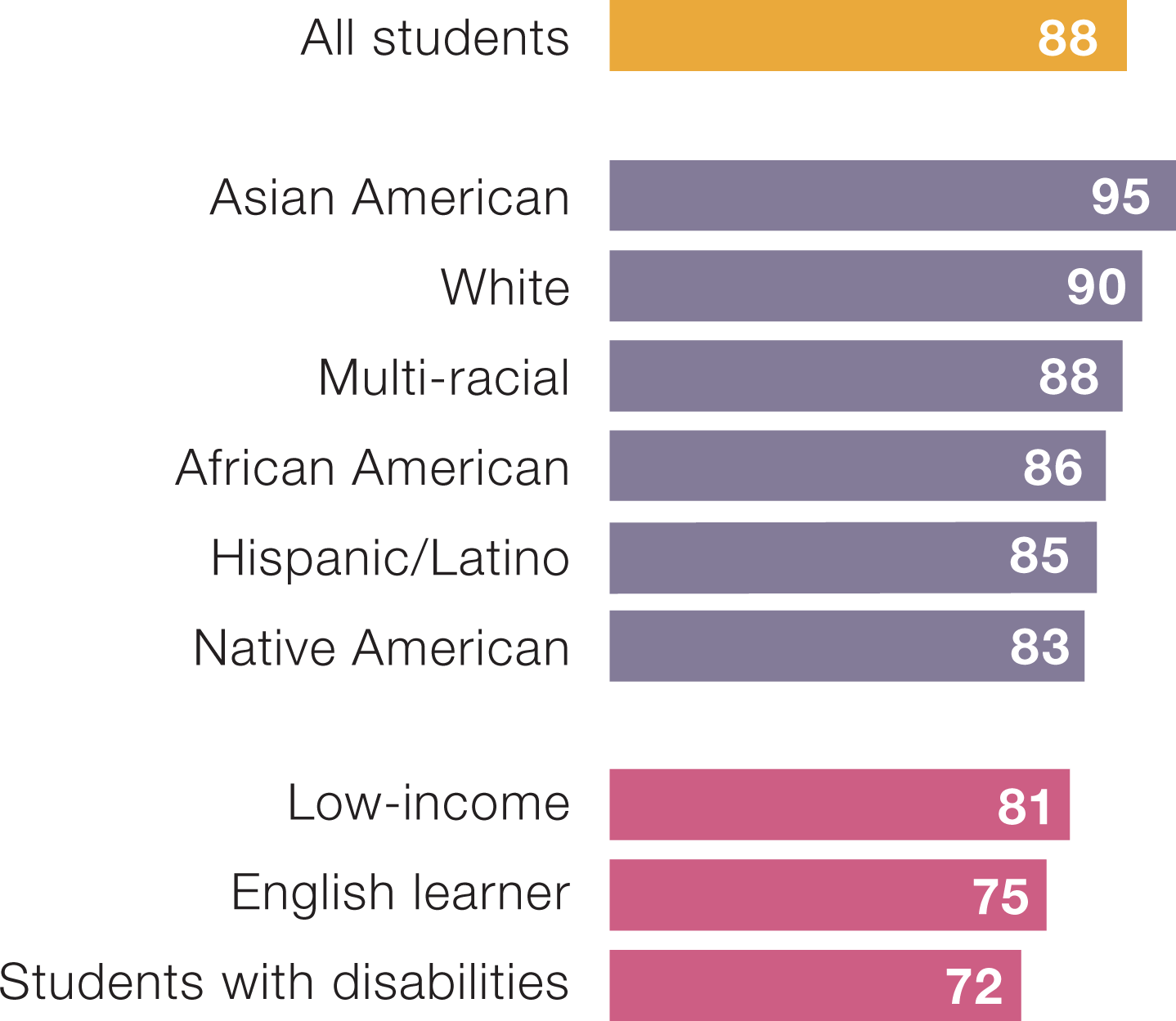
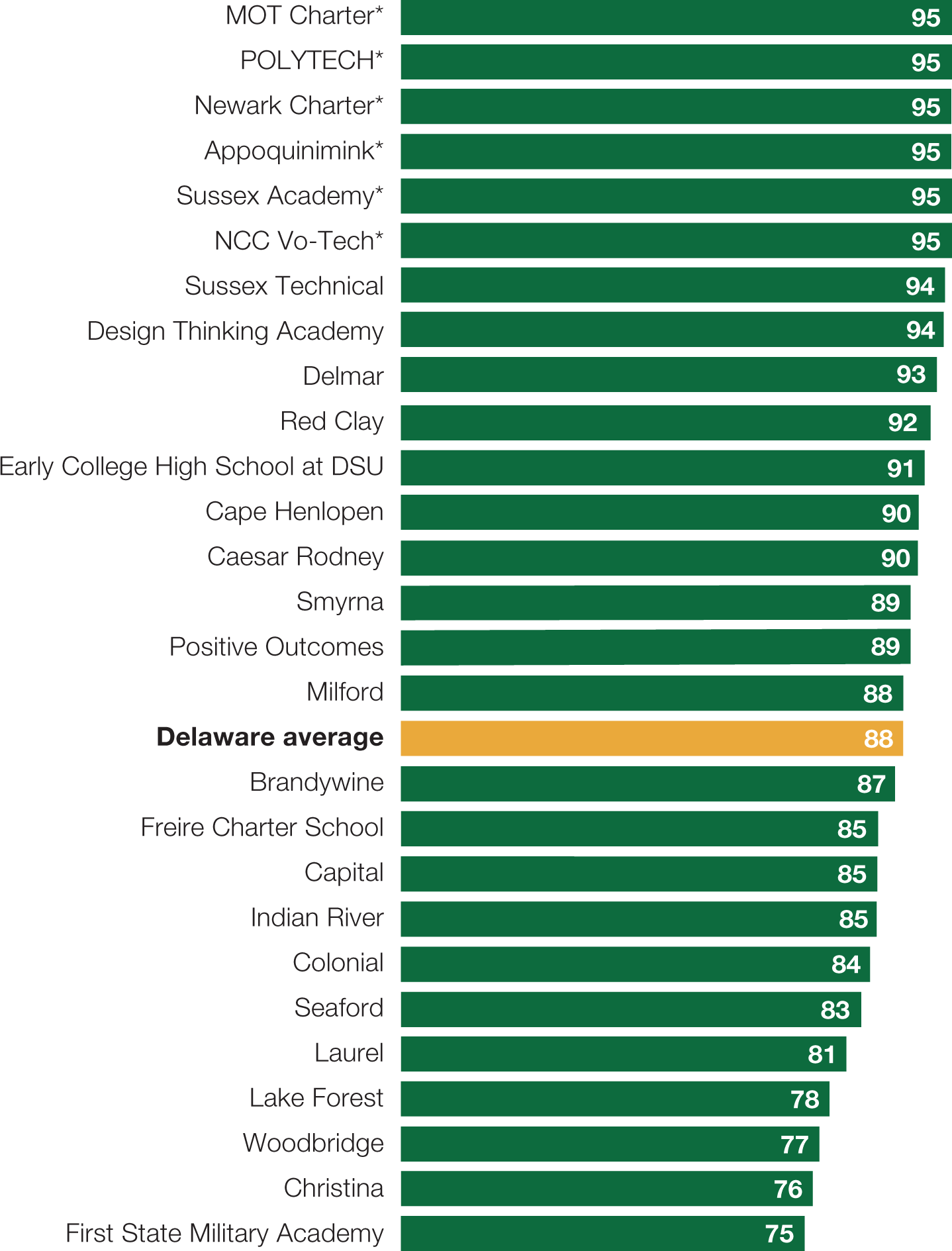
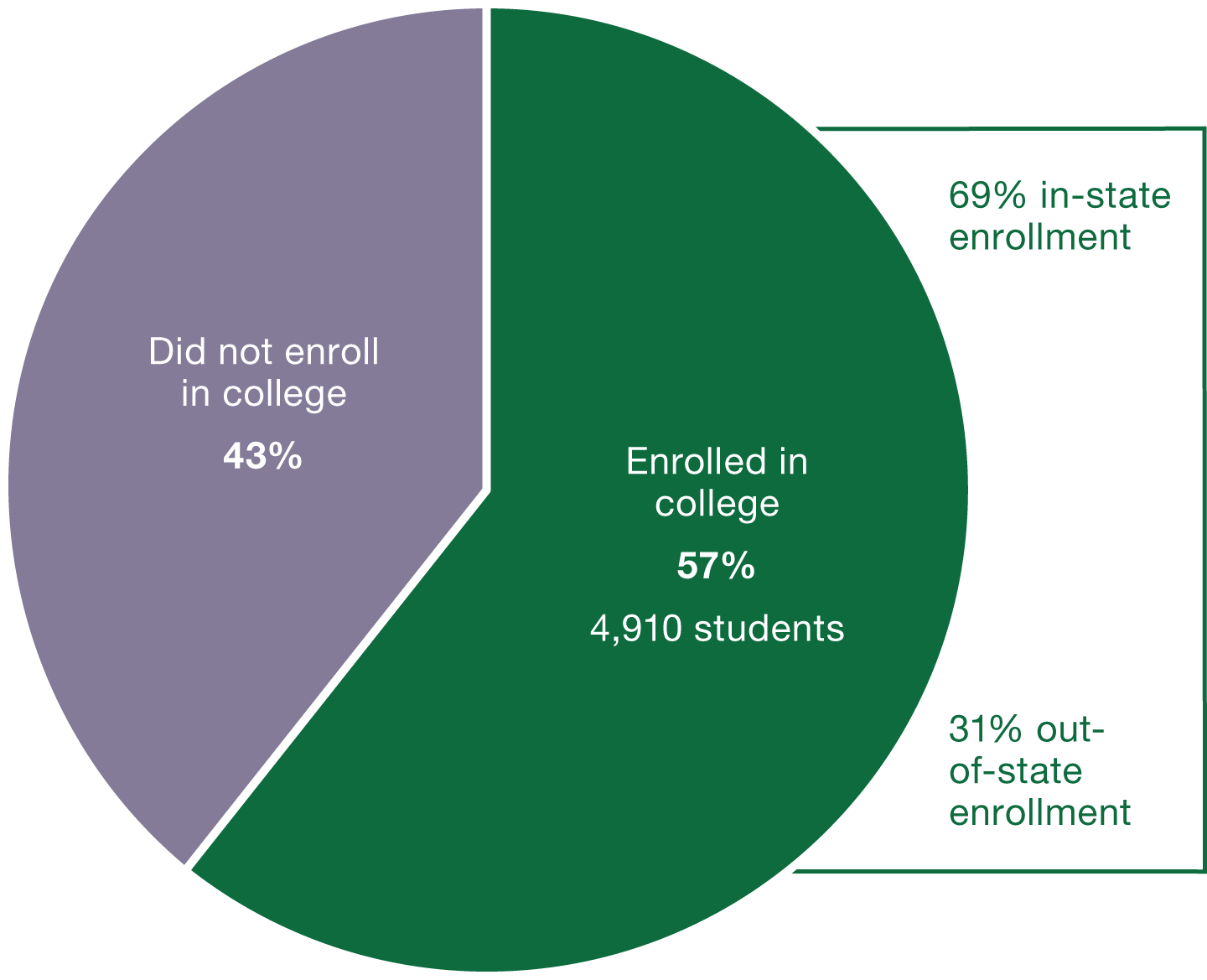
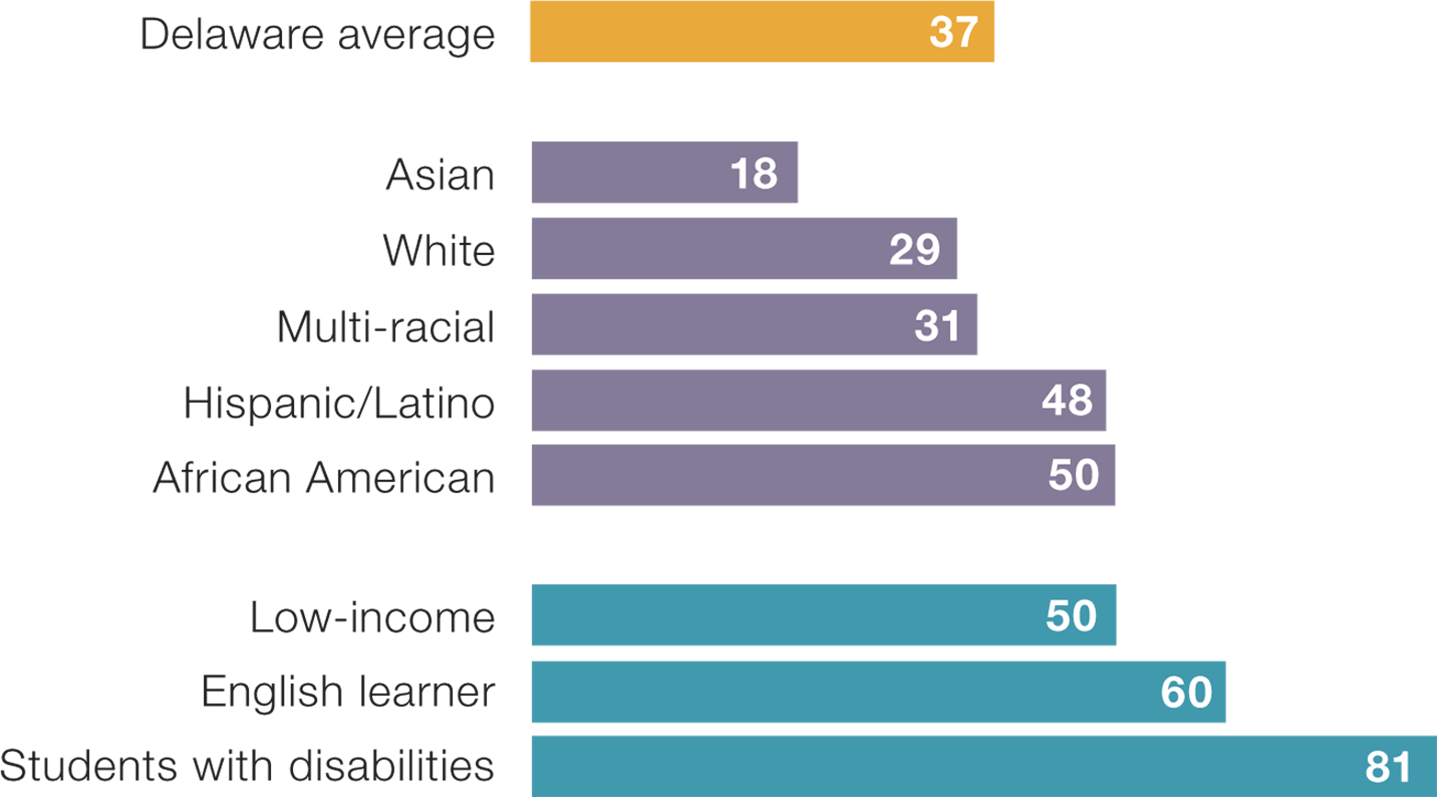
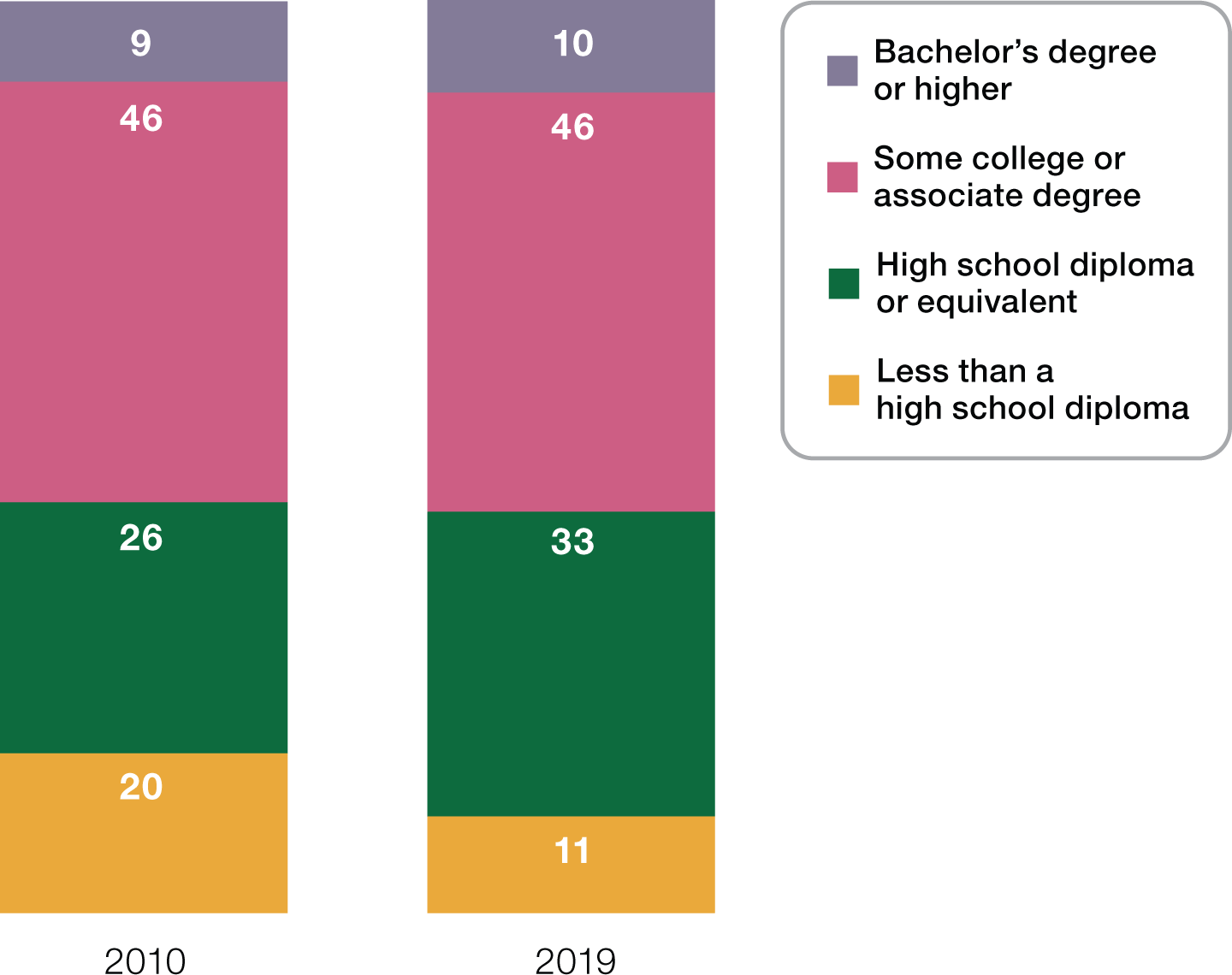
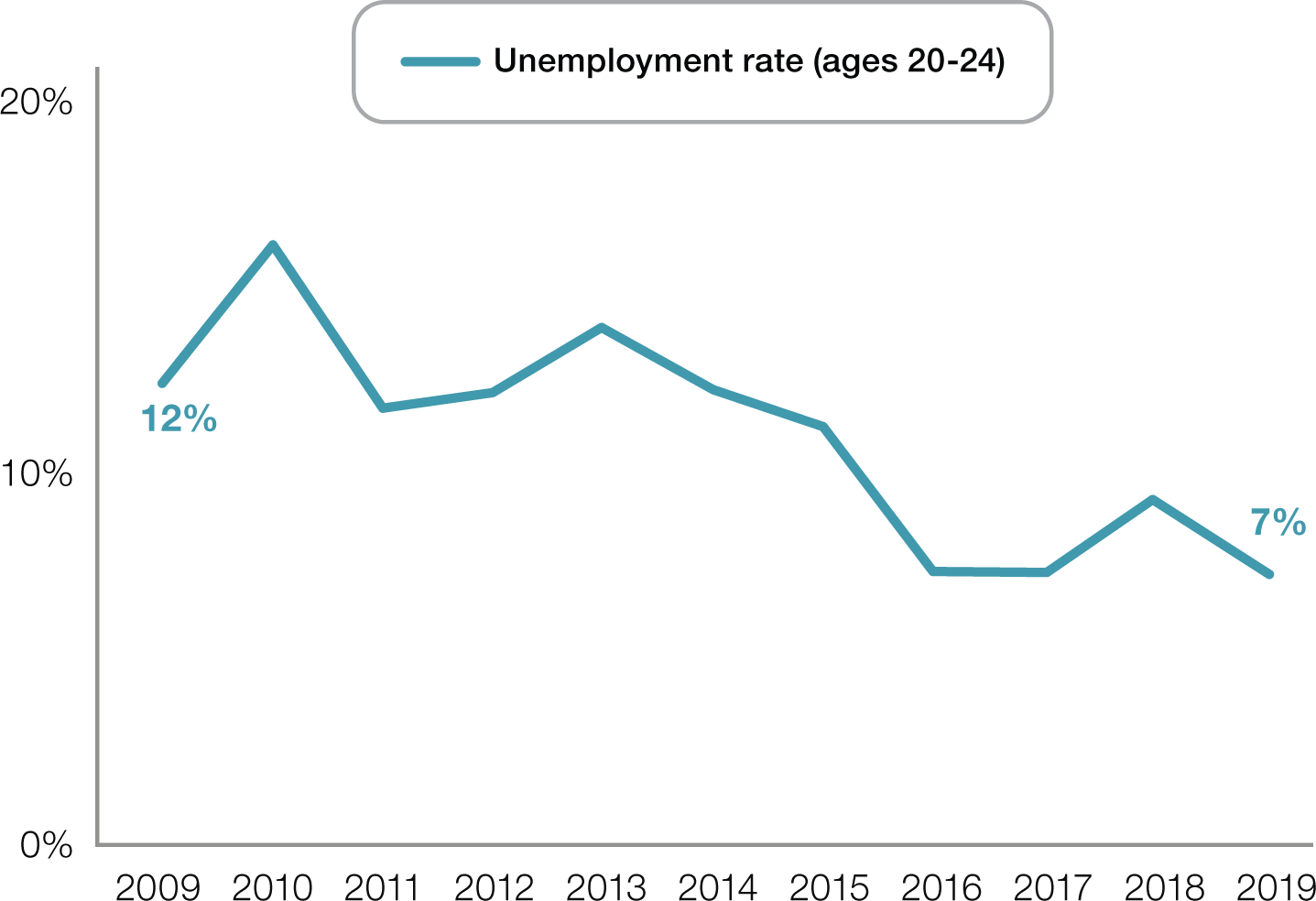
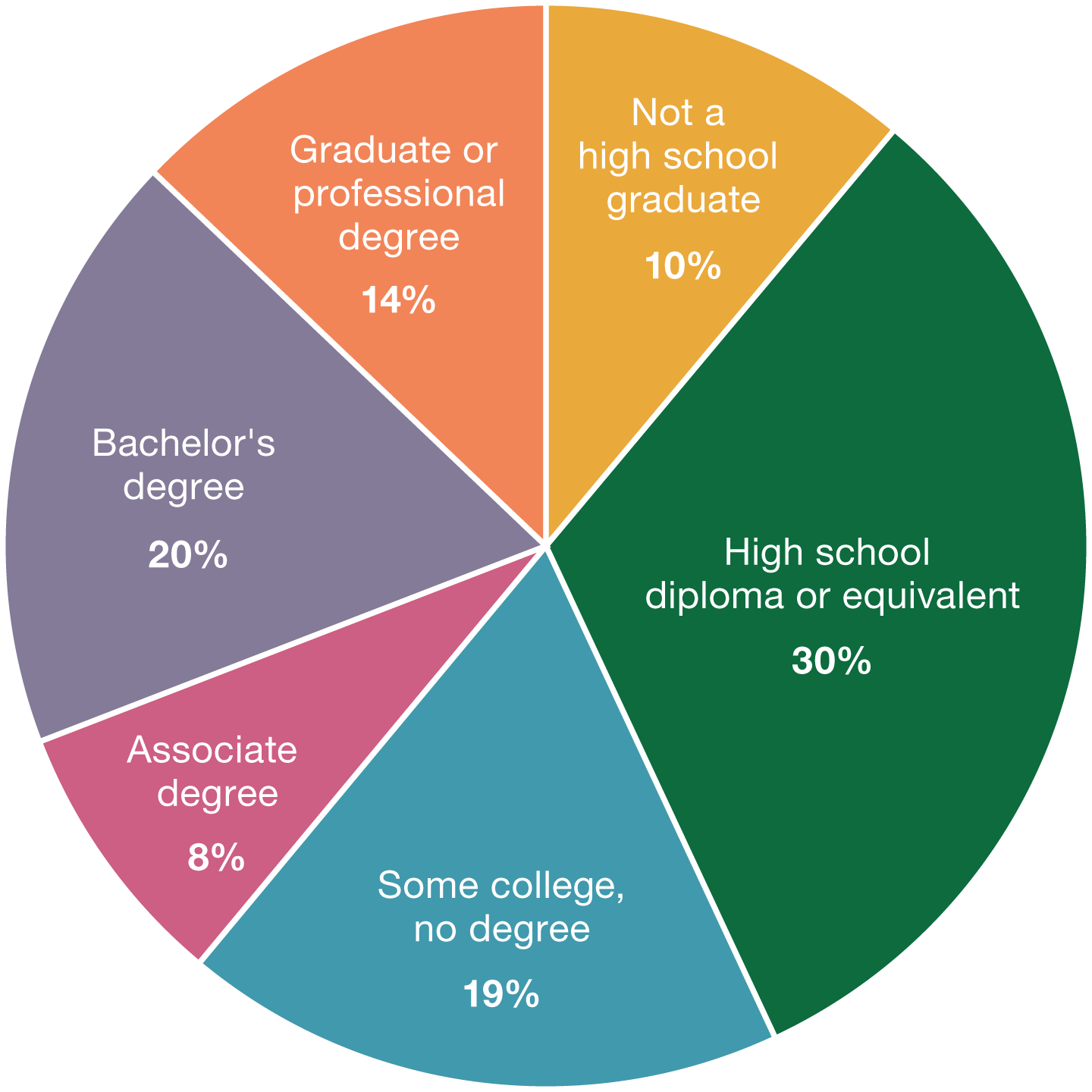
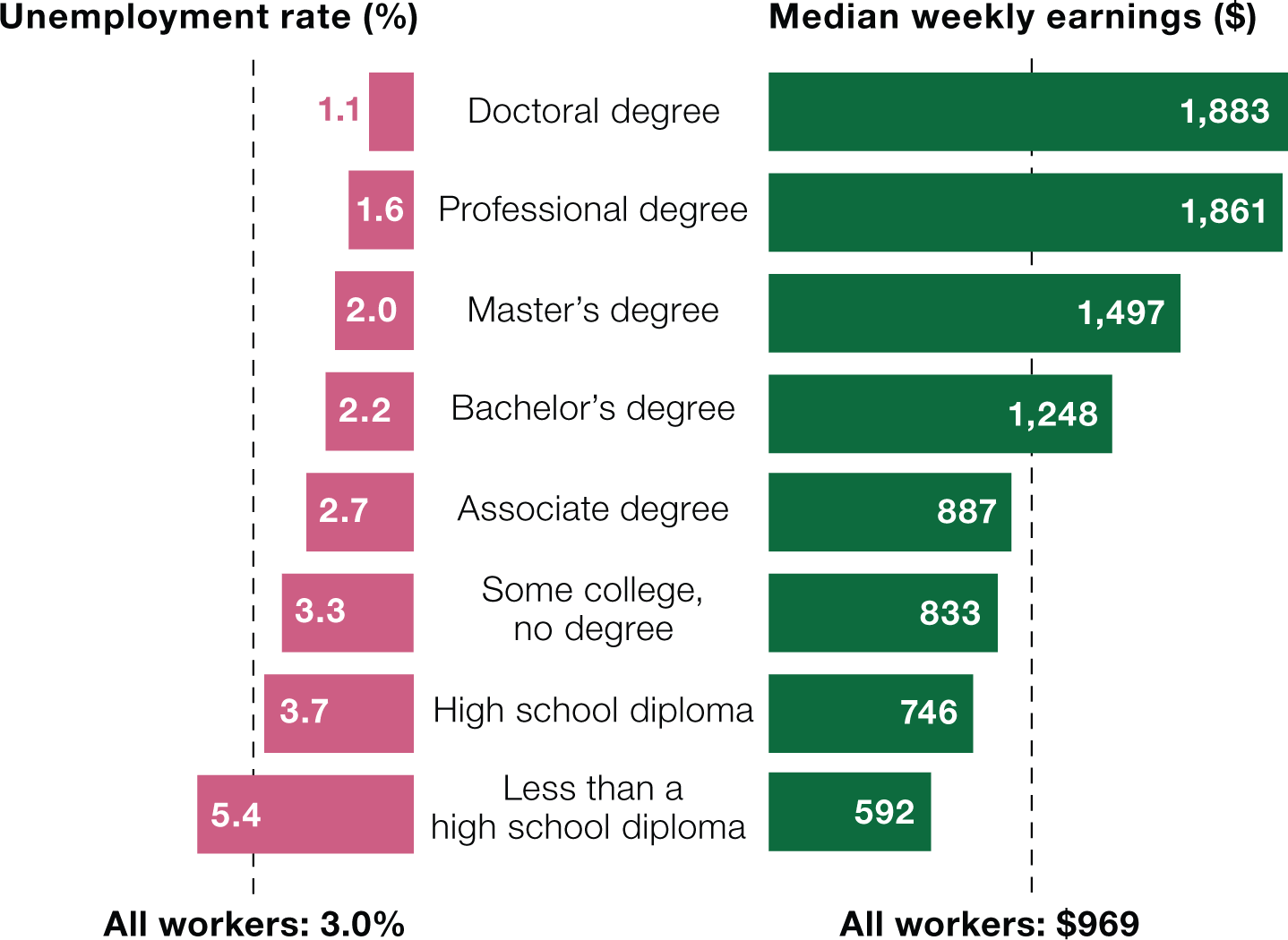
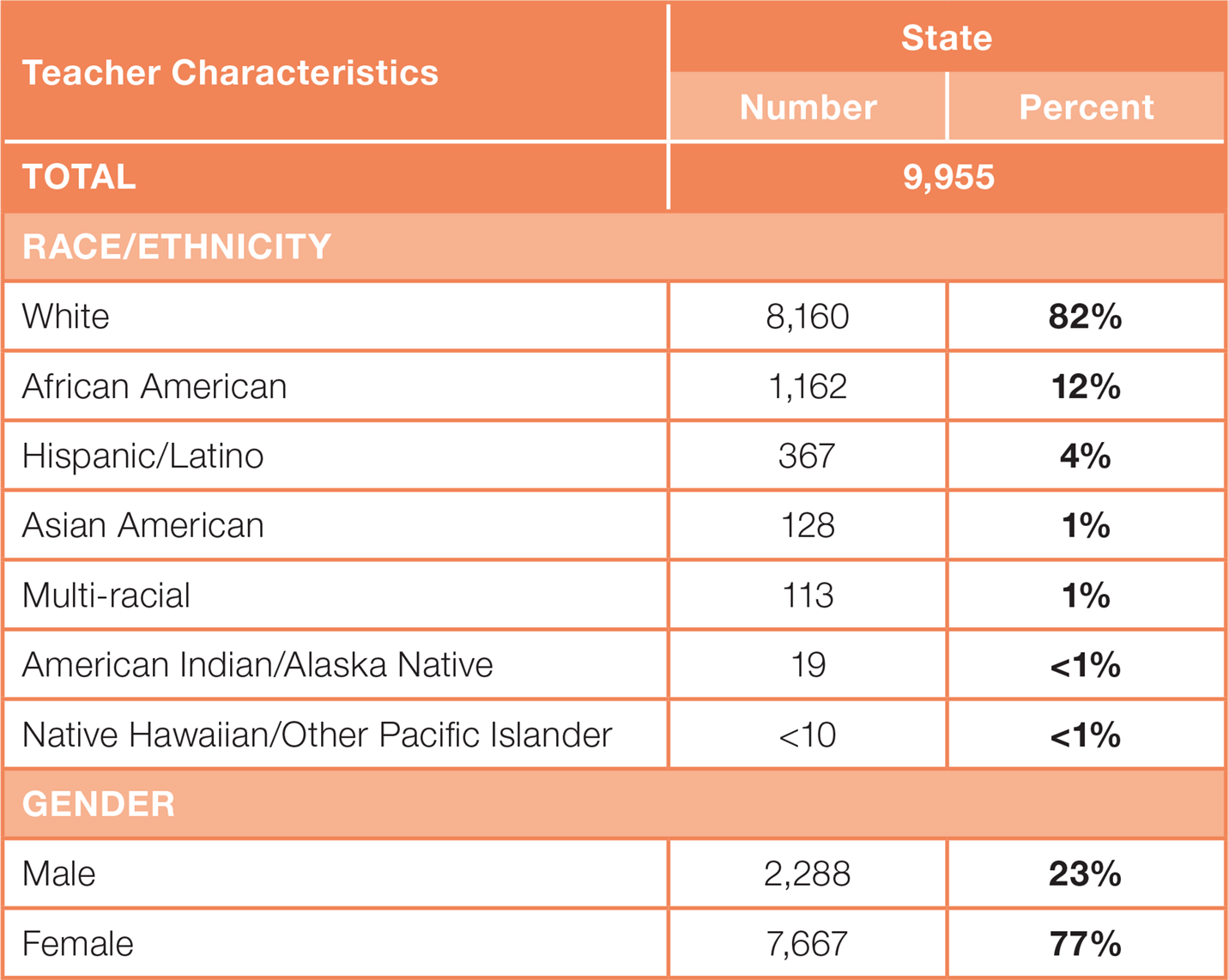
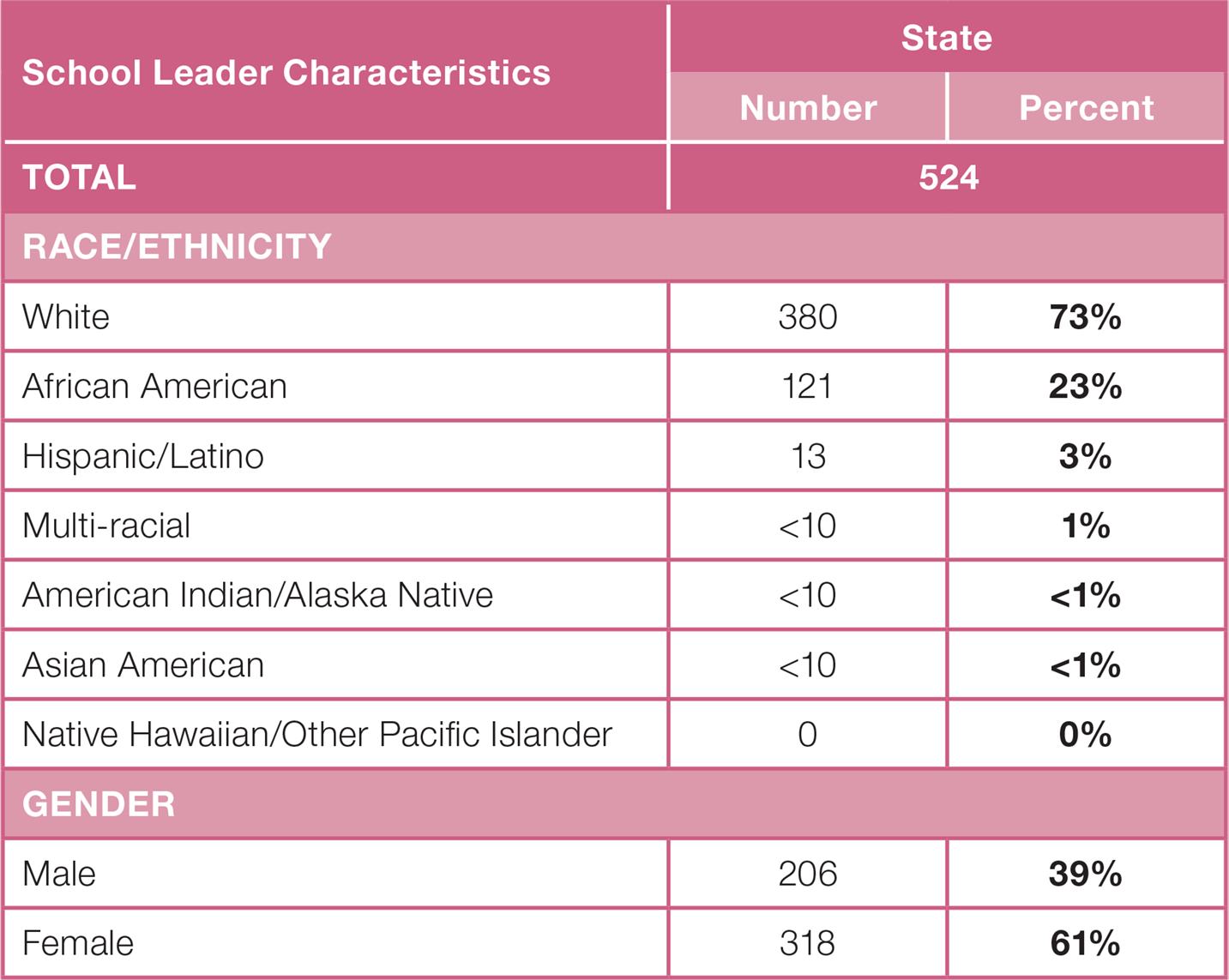
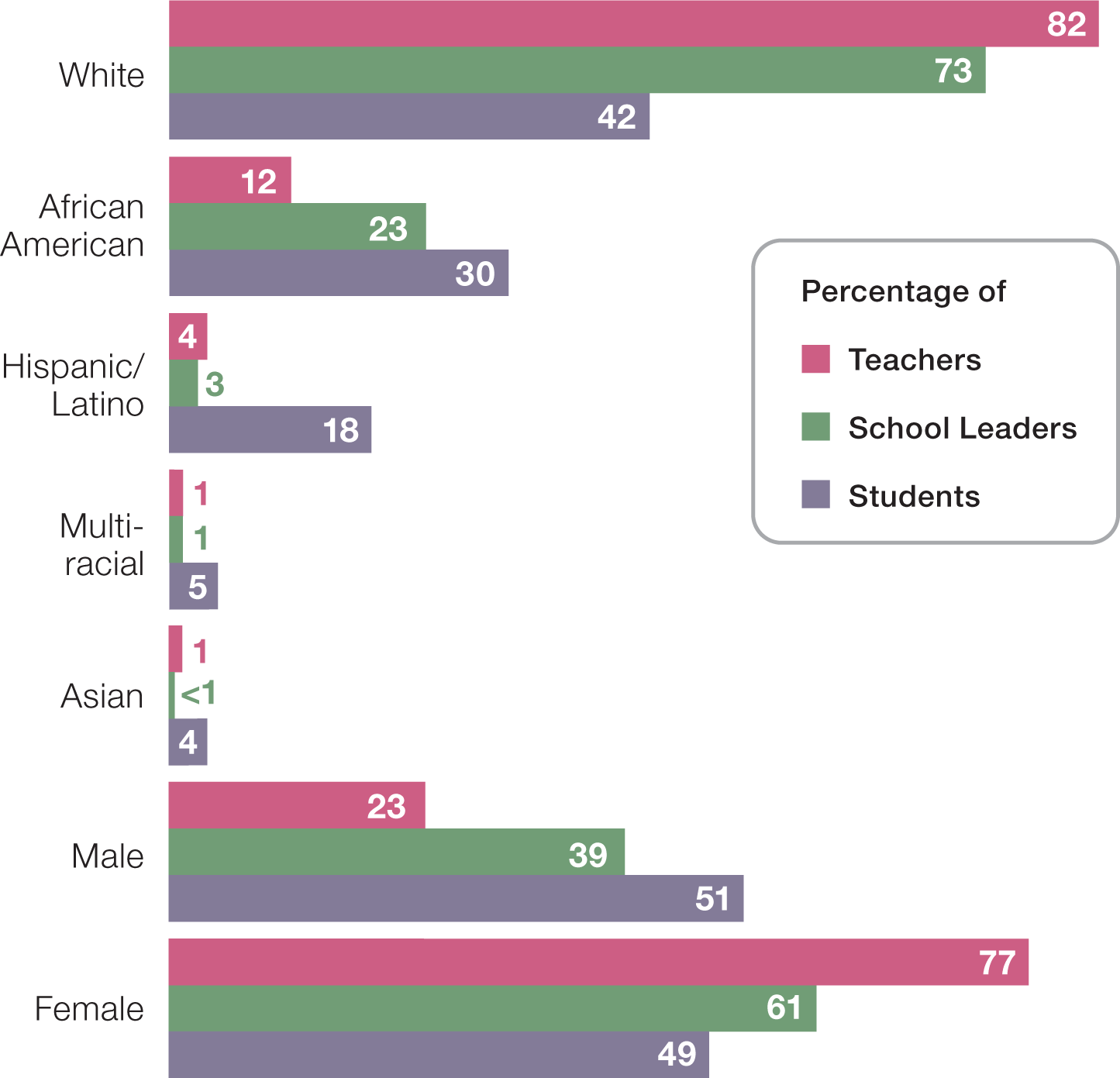
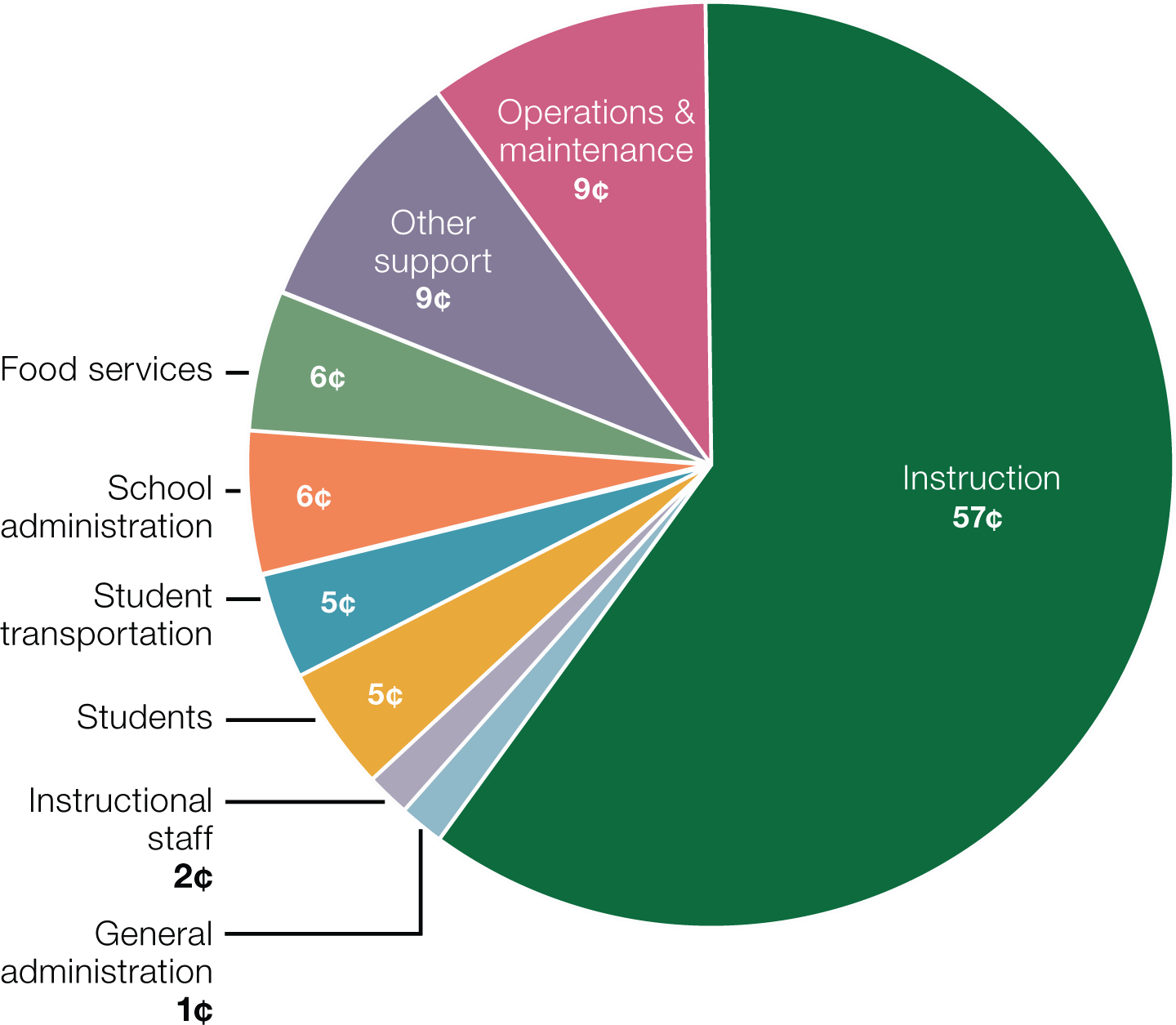
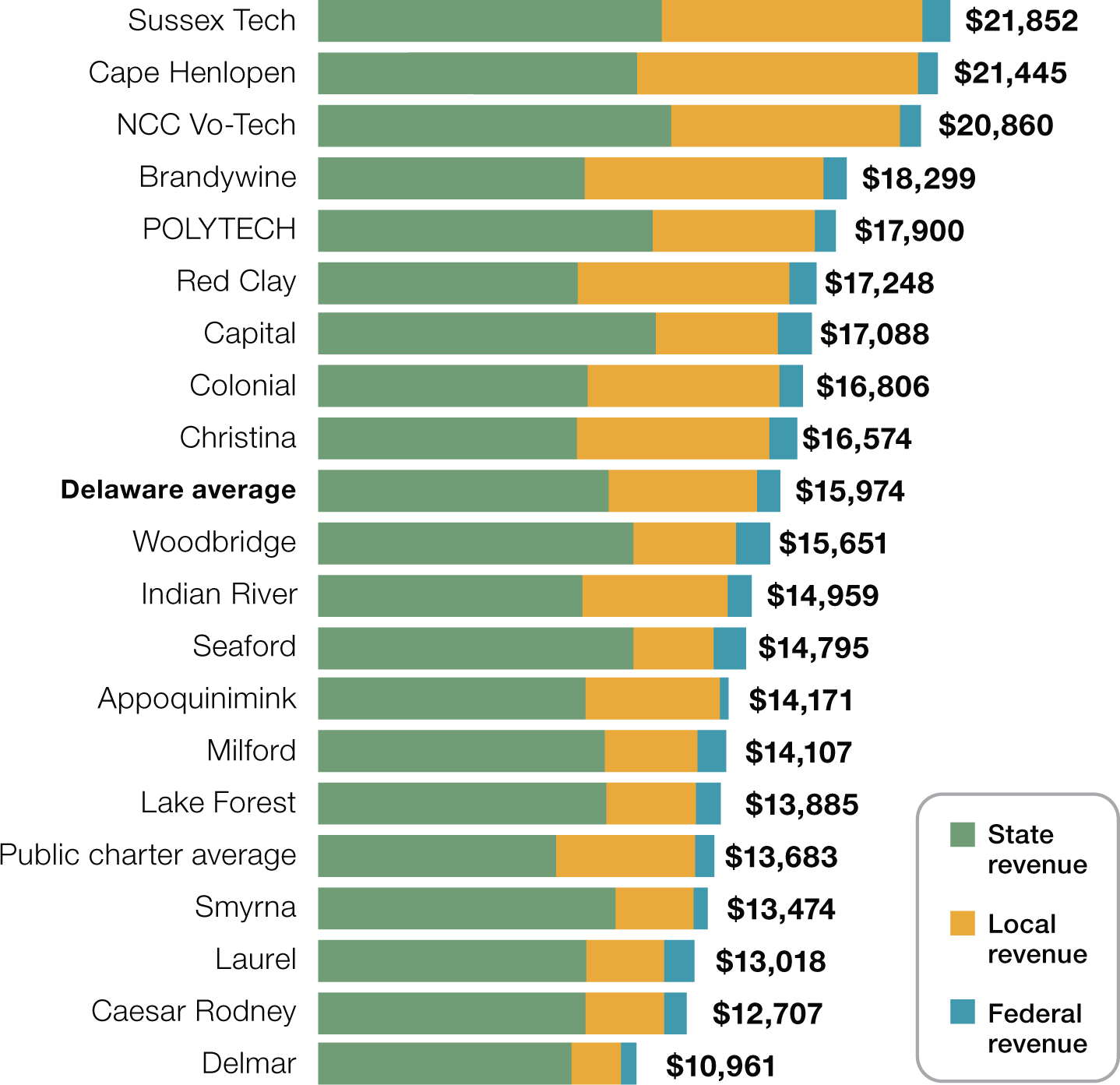
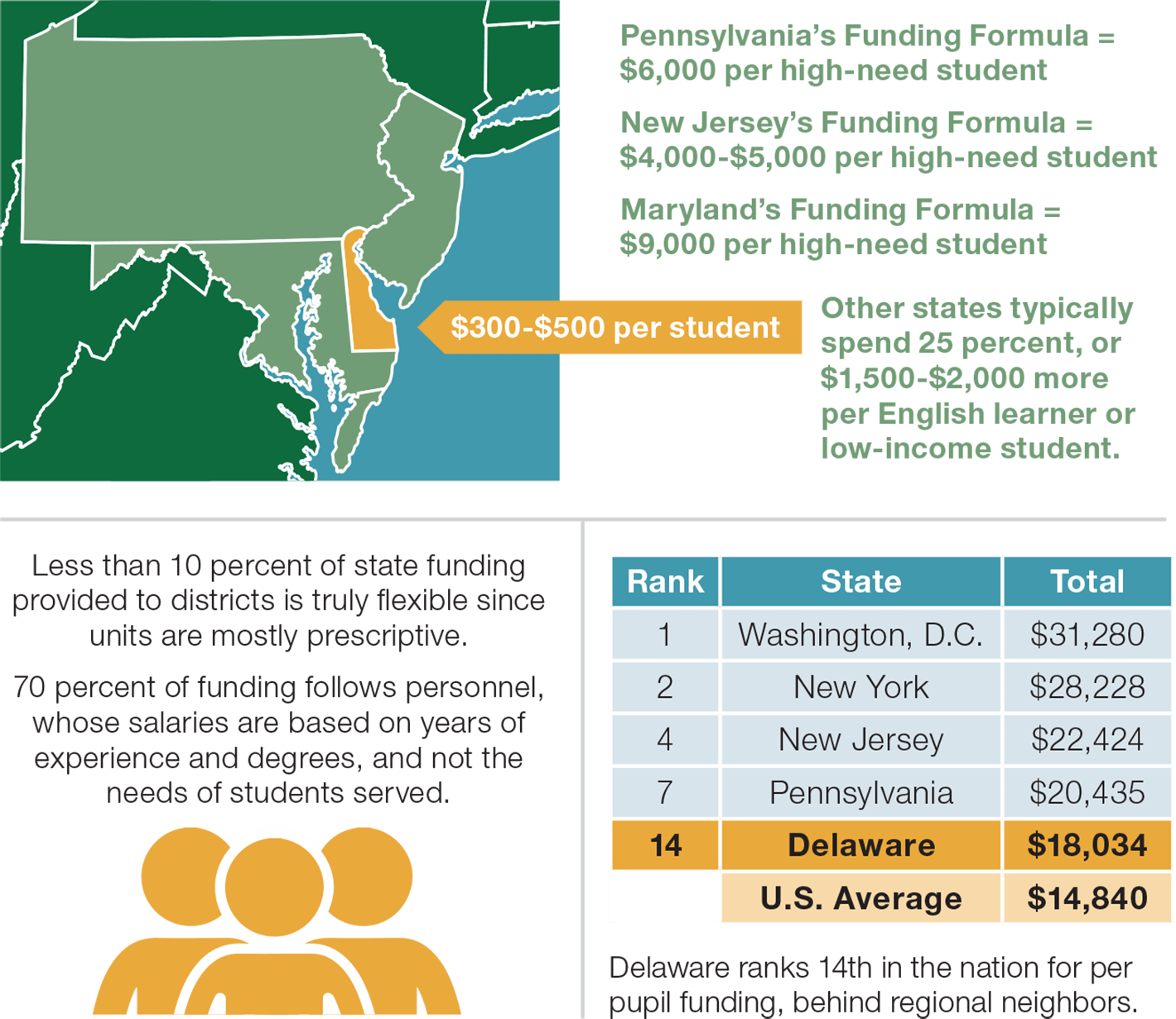

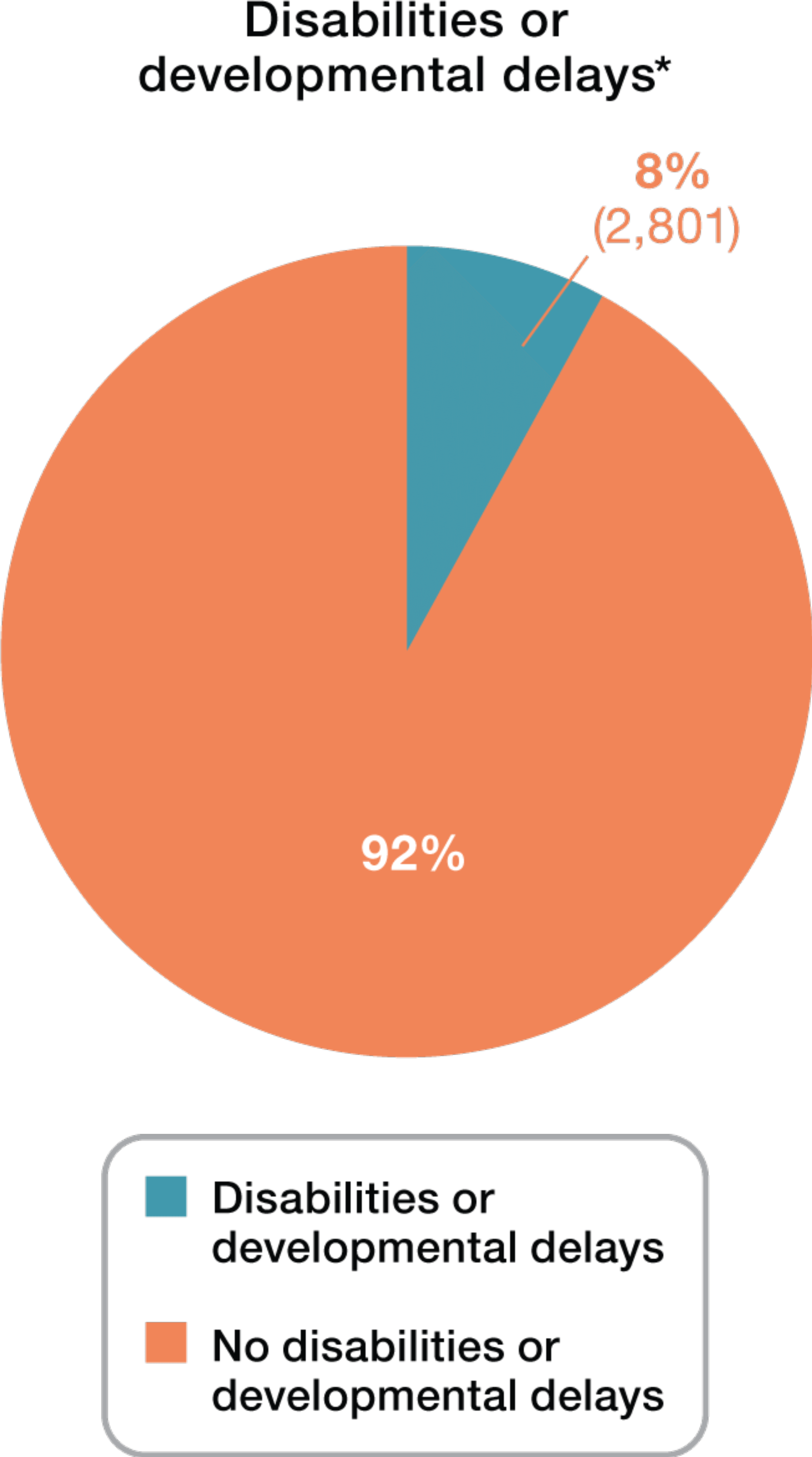
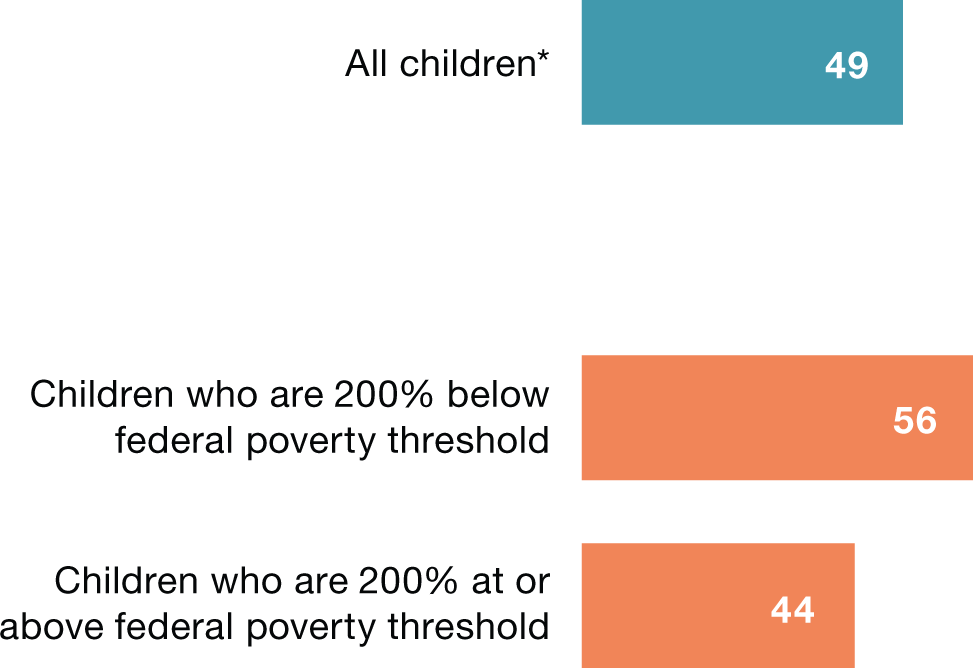 Percentage of children in poverty ages three to four not enrolled in
school, including nursery school, preschool or kindergarten (2018).
Almost 60 percent of children in poverty are not in preschool.
Percentage of children in poverty ages three to four not enrolled in
school, including nursery school, preschool or kindergarten (2018).
Almost 60 percent of children in poverty are not in preschool.
